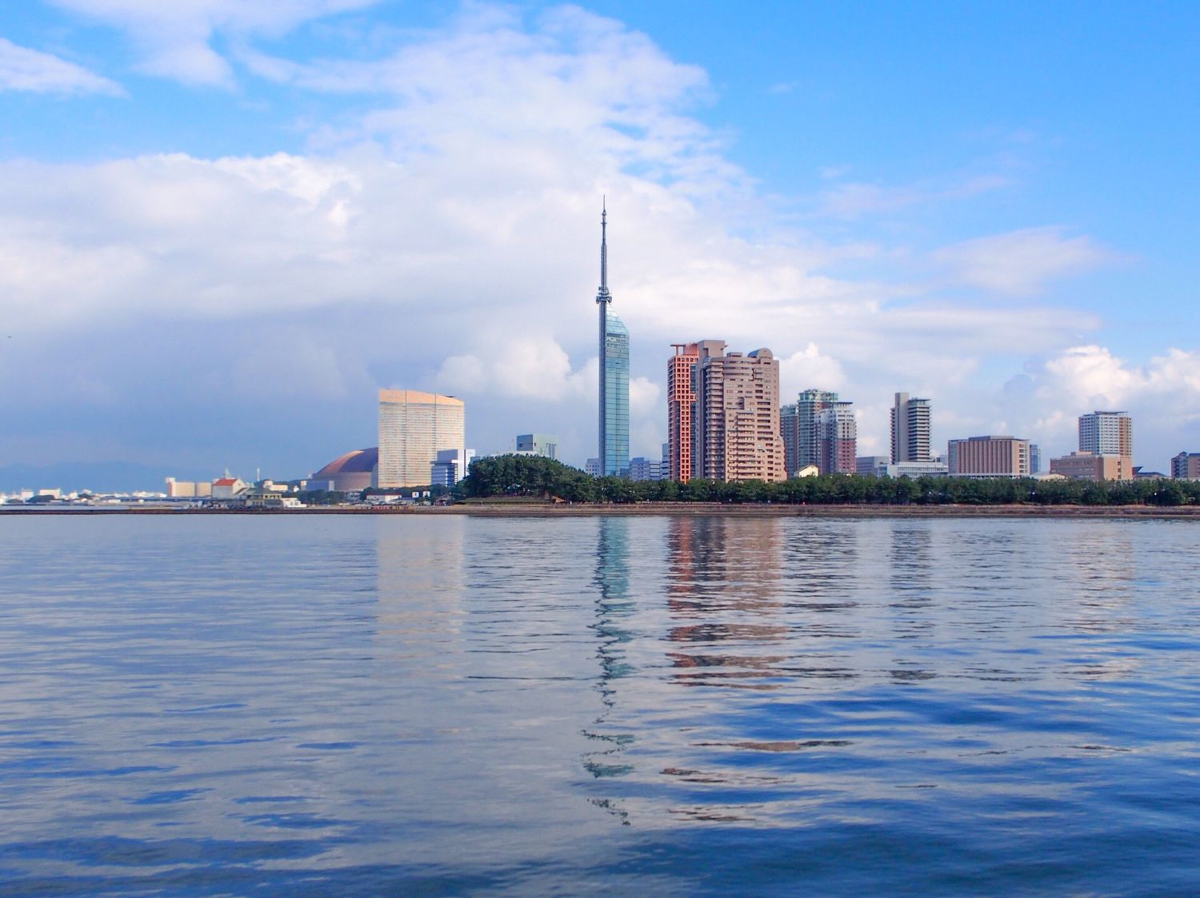

Fukuoka City (Hakata) | Travel Guide
The city of Fukuoka is also known as Hakata. It is the biggest city in Kyushu and the 5th biggest city in Japan. It is not only the center of administration and economy in the Kyushu region but also a terminal for air routes and railroads, occupying a central role in travel, information processing, and entertainment. Let’s see what this bustling city has to offer to visitors in this travel guide!

Fukuoka City’s best feature is its blend of a typical cityscape with green natural spaces. For tourists, there is a thriving nightlife and many shopping opportunities, traditional shrines and historical sights, Japanese festivals, and other special events to amaze you. Fukuoka always has something to offer in all seasons.
Hakata Station
Hakata Station is the central station of the city. The shinkansen stops at this station, so you can go to Hakata directly from Tokyo Station which takes about 5 hours. Around Hakata Station, lots of office buildings are rising, and restaurants and hotels stand close together.
Fukuoka’s major commercial district of Tenjin is happening seven days a week. It has been the thriving center of Fukuoka since the Edo period when it was a castle town. The name Tenjin came from a Shinto shrine called Suikyo Tenmangu. There are department stores such as Mitsukoshi and Daimaru in Tenjin, and many smaller shops and restaurants.
Yatai literally means ‘temporary food stand which opens only in the evening’. There are about 100 yatai in Fukuoka, especially in the Nakasu (central island in the river) district. They serve different dishes at the stands. You can have ramen , yakitori , oden , and a lot of other kinds of food. The ramen style of Fukuoka is very popular throughout the country with its thick pork broth called ‘tonkotsu’.
The Nakasu district is a very unique place in Japan and a must-do for street food lovers. You seldom find a similar place in other cities in Japan, so if you come to Kyushu you should take the opportunity to visit Fukuoka for this district. One of Japan’s most famous ramen franchises started here, Ichiran Ramen, which is especially known for its separate seating and deliciously fresh noodles.
Canal City Hakata
Canal City Hakata is a modern shopping center that opened in 1996. The unique building was designed by American architect Jon Jerde. It is a complex of shops, restaurants, a hotel (Washington Hotel), and a movie theater. There is an artificial canal in the building which creates a nice atmosphere.
Toho Village near Fukuoka
Toho Village is a one-hour drive away from Fukuoka, but it deserves a special mention because it is one of the best places in Japan to take amazing pictures of terraced rice fields. With the misty green mountains in the background and the green paddies in the valley, it is one of the best vistas in Japan.
Your Japan Tour
As seasoned Japan experts, we create perfect Japan package tours including destinations like Kyushu. Check out our group tours and private tours , or contact us to start planning your unforgettable holiday to this fascinating country full of once-in-a-lifetime experiences, culture, history, nature, and delicious food!
Access Information
Access to Hakata Station :
From Tokyo, 5 hours by Shinkansen (bullet train)
From Shin-Osaka, 2.5 hours by Shinkansen
Fukuoka Area Map
Recommended Articles
Vegetarian's Japan Guide

The Best Hakata Travel Guide: Where to Go and What to Do
Whether you will be taking the bullet train or flying into Kyūshū , the first major transportation hub you are likely to stop by is Hakata Station (博多駅). Around the station, there are a variety of attractions for you to stop by. Whether you are only transiting Hakata or planning to stay for a few days in Fukuoka City , you will most likely want to include a few of the below spots into your itinerary:
Tsubame no Mori Plaza (つばめの杜ひろば)
Canal city hakata (キャナルシティ博多), sumiyoshi shrine (住吉神社), rakusuien garden (楽水園), kushida shrine (櫛田神社).
- Karo no Uron Udon Restaurant (かろのうろん)
Hakata Machiya Furusato-kan Museum (博多町家ふるさと館)
Mangyō-ji temple (普賢山萬行寺), tōchō-ji temple (真言宗 東長寺), shōfuku-ji temple (聖福寺), jōten-ji temple (承天寺), shungetsu-an udon restaurant (中世博多うどん春月庵), hakataza theater (博多座), fukuoka asian art museum (福岡アジア美術館), hakata’s yatai food stall street (博多の屋台街), hakata port tower (博多ポートタワー), tōkaebisu shrine (十日恵比須神社), explore hakata with a guided tour or hire a photographer.
If you prefer a guide to introduce you to the charms of Hakata, how about joining one of the below tours? You can also hire a photographer for a private photoshoot session!
- Hakata Cycling Tour
- Historical Hakata Tour
- Sumiyoshi Shrine and Hakata Shopping Tour
- Private Fukuoka Tour with a Local, Highlights & Hidden Gems 100% Personalised
- Fukuoka Full-Day Private Tour with Government Licensed Guide
- 1-Day Hakata Walking Tour
- Fukuoka History Buddhism And Gastronomy Tour
- Port Pick-up: Fukuoka City Tour with Licensed Guide and a Vehicle
- 1 Hour Private Photoshoot in Hakata
Tip: Refer to HERE if you want to rent a Kimono when you are in Hakata!
Activities to Enjoy in Hakata
- Book through Klook
- Book through Viator
- Hakata Temples & Doll Painting Experience Walking Tour with Guide
- Fukuoka Open Top Bus and Hakata Doll Painting Experience with Guide
View this post on Instagram A post shared by つばめさん (@hakatatsubamenomori)
The building of JR Hakata Station is a shopping mall in itself. Apart from the restaurants and shops, there is a really unique plaza on the rooftop. Not only is there an observatory terrace, but there is also a mini train that runs around the sky garden in the plaza!
On top of that, a part of the plaza forms the precinct of Tetsudō Shrine (鉄道神社). It has a part of the spirit of the god in Sumiyoshi Shrine (住吉神社) , close to the station enshrined. While the worship hall is rather small, the shrine where you can pray for a safe trip from JR Hakata Station has three torii gates on the 50-meter-long approach with food and Kyūshū’s specialty stalls lined on the sides. There is even a small vegetable farm and a small river!
Walking through the three torii gates has a meaning to it. The first gate repels evil spirits. Given that nothing bad surrounds you, it is time to obtain some good luck as you pass through the second gate. To make your life happier, the third gate grants pilgrims good relationships.
As you pass through the fourth torii gate, you will notice a few more interesting things placed around the precinct. In the middle of the precinct is a statue of seven boys connected by a rope, so it is like each of the boys is a train carriage. It is said that if you pet their heads, it will make your prayers come true.
On the right of the statue, there is a small but rather cute Jizō Bodhisattva. It was made to symbolise prayer for a quick recovery from those affected by the 2011 Tōhoku earthquake. Moreover, you can examine the old map of Hakata, located opposite Jizō Bodhisattva.
View this post on Instagram A post shared by くみ (@pancake315112)
The Cost and the Operation Hours of the Little Tsubame Train
On the other side of the rooftop terrace, the mini-train Tsubame will excite young children.
- The cost is 200 yen per child, but free for toddlers who are 2 years old or younger.
- From the 4th of January to the end of February, the hours are shortened to 5 pm.
- On weekends and public holidays, the train will be running from 10 am to 6 pm.
View this post on Instagram A post shared by 𝙎𝙤𝙢𝙞𝙣 🇰🇷 (@sominineurope)
Canal City Hakata is one of Kyūshū’s representative commercial complexes, as big as Tokyo Disney Land, situated at the bank of the Naka River (那珂川).
The name of the complex comes from the fact that there is an artificial canal flowing through the middle. You will also find a dynamic water fountain where water and lighting shows are held every 30 minutes from 10 am.
In addition to shops and restaurants, there are also two hotels, a cinema, a theater, and other entertainment facilities. As you shop around, you might spot some people in business suits. They are most likely salarymen working on the same complex’s office floors.
On Sun Plaza’s B1 floor, various performances performed by artists all over the world are on stage almost every day. Remember to check with the staff upon arrival to see what performances and events are scheduled for the day.
Events are also held to celebrate various festivals throughout the year at Canal City Hakata. The Christmas illumination and performances at Canal City Hakata are something you definitely wouldn’t want to miss out on if you visit Hakata in December (we still regret not checking it out during our visit until today, as we didn’t know about it!).
Tip: As the complex consists of multiple areas and hundreds of shops and restaurants, it is best to plan ahead by visiting their website HERE .
Canal City Hakata’s Business Hours and Access Information
- The shops are open from 10 am to 9 pm.
- Restaurants are open from 11 am to 11 pm.
- If you are taking a bus, get off at Canal City Hakata-mae (キャナルシティ博多前).
- From Hakata Station (博多駅) and Fukuoka Subway’s Nakasu-kawabata Station (中洲川端駅), it is around a 10-minute walk.
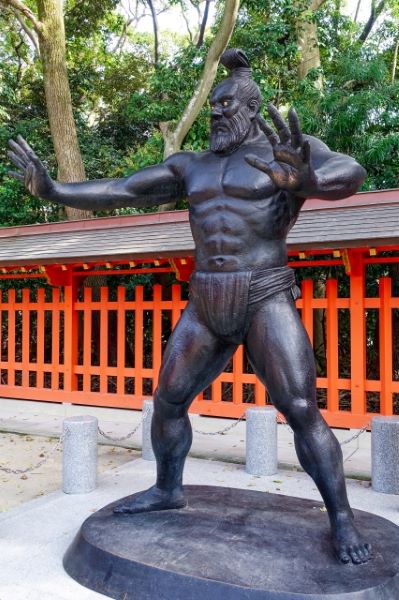
If we could only visit one shrine in Hakata, it would definitely be Sumiyoshi Shrine!
Although buried in the urban jungle close to Hakata Station, the shrine with a long history has a vast precinct filled with greeneries.
One of the biggest highlights we found is the God of Sumo (see the photo). What pilgrims like to do is join their hands with God’s hands to gain and absorb his strength!
For more information about the attractions in the shrine, please refer to our article on Sumiyoshi Shrine !
If you want to escape the bustling Hakata city center quickly, Rakusuien at the back of Sumiyoshi Shrine is the perfect place to spend your 10 or 20 minutes break.
The small garden is like an oasis in the city, allowing you to slow down and appreciate the beauty of nature. From mid-November to early December, the garden will be covered with the stunning bright fall colors.
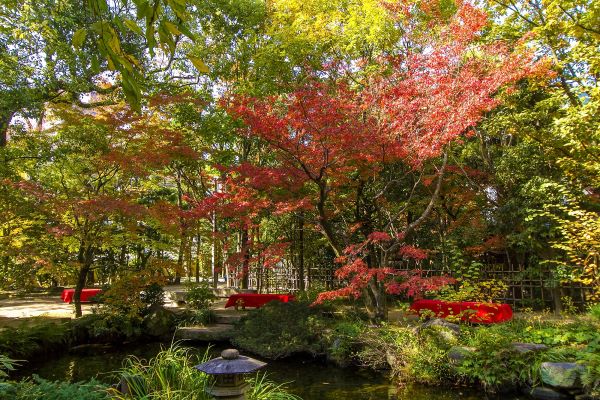
Rakusuien was a part of the rich Hakata merchant Shimozawa Zenemon Chikamasa’s (澤善右衛門親正) villa, completed in 1906 and later donated to the city. In 1995, the city renovated the villa and opened it as a place for the locals to enjoy the Japanese tea ceremony.
Enjoying Tea at Rakusuien
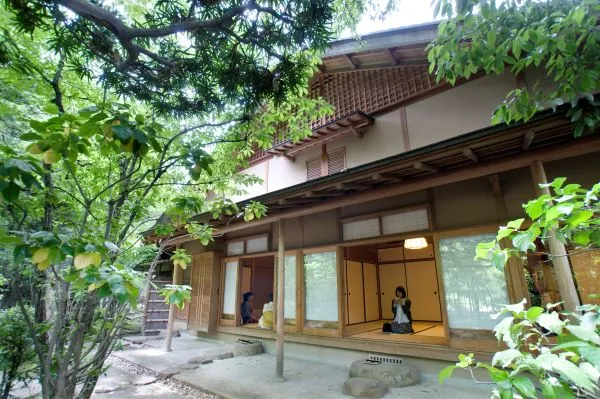
Rakusui is the alias of Chikamasa. Tea ceremonies and practices are regularly held in the garden’s tea room, Rakusui-an (楽水庵).
As for tourists, we can quietly relax whilst sipping a cup of freshly made matcha green tea and consuming a piece of traditional sweet in the room covered by tatami mats. At the same time, we can adore the Japanese garden in front of us.
The cost of the matcha set is 500 yen.
The garden is covered by gorgeous light green moss. The multi-tiered waterfall and the koi fish are also some of the highlights of this lovely garden.
The fish will most likely swim towards you if they sense your presence. What they are after is, of course, some fish feed, which the garden is selling.
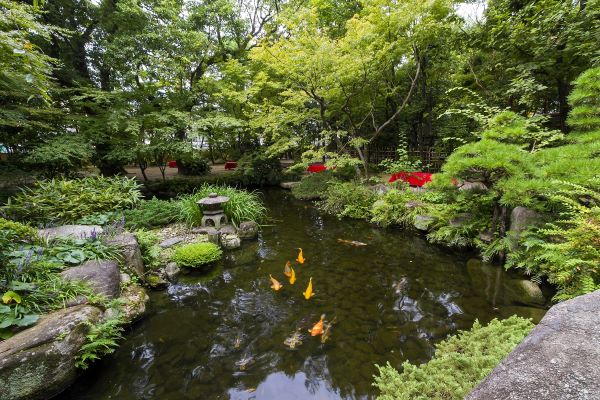
On a rainy day, the traditional garden water feature, Suikinkutsu (水琴窟), will produce some clear echo water sounds from the rain drops. If it isn’t a rainy day during your visit, you are welcome to use the ladle (located at the water fountain) to pull some water down the little hall.
Hakata-bei Wall (博多塀)
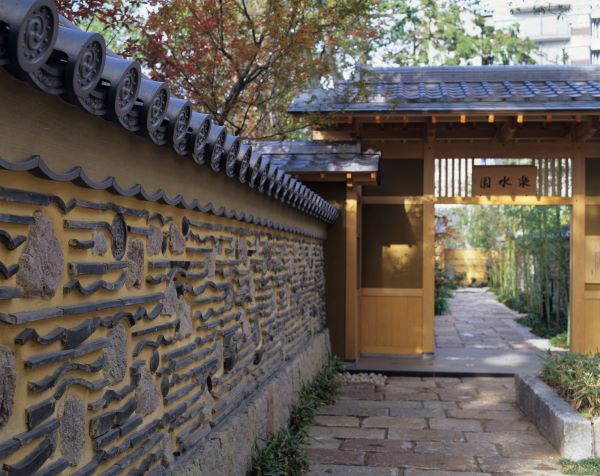
Another thing that you will want to pay attention to is the earthen walls. The style is called Hakata-bei. After Toyotomi Hideyoshi took down Kyūshū in the late 16th century, Hakata was revived by using the stones and tiles from the buildings that were burnt down during the civil war. The walls made from these recycled materials are called Hakata-bei.
Apart from Rakusuien, Hakata-bei can also be seen in a couple of shrines and temples in Hakata ( Kushida Shrine and Shōfuku-ji for example).
The Flower Calendar in Rakusuien
- Early spring: Cherry blossom
- Early summer: Iris
- Mid-November to early December: Fall foliage (the season usually peaks from the end of November)
Rakusuien’s Opening Hours, Admission Fees, and Access Information
- If Tuesday is a public holiday, it will close the next business day.
- 100 yen for senior high school students and above
- 50 yen for elementary and junior high school students
- From Hakata Station (博多駅), it is around a 10-minute walk.
- If you take the loop bus, get off at TVQ-mae (TVQ前). From the garden, it is a 2-minute walk. Otherwise, get off at Echimae Yonchō-me (駅前4丁目) or Sumiyoshi (住吉), which is a 7-minute walk away from the garden.
Tip: If you have a Fukuoka City Visitor’s Guide or FUKUOKA TOURIST PASS, you will get 20% off the admission fee.

Another shrine located not far away from Hakata Station is the Kushida Shrine. It is where the Hakata Gion Yamakasa Festival is held (one of the biggest events in Hakata’s summer).
The best thing about it is that the Kazari Yamakasa Festival float is permanently stationed in the precinct!
For more information about the festival and other interesting things about the shrine, please refer to our article on Kushida Shrine .
Just opposite Kushida Shrine, the three traditional houses built in the Meiji period have been renovated and opened as a place for people to examine or make their traditional crafts. You can also go there to appreciate and understand the local culture and Hakata citizens’ lifestyle from the Meiji to the Taishō periods.
Each of the three buildings of the facility has a theme: one to examine the structure of Machiya (tradesman’s house), another to exhibit handicrafts, and the third one as a place for tourists to shop for local specialties.
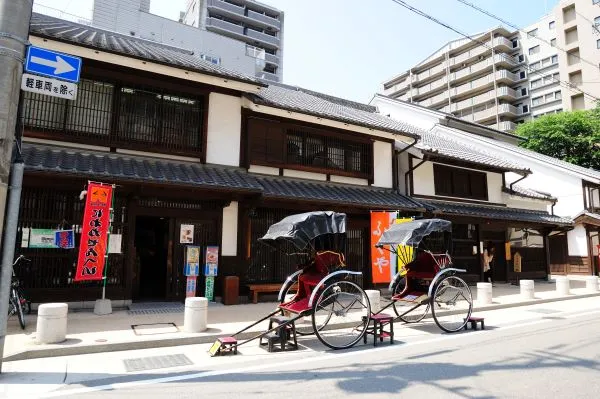
For more information on what you can expect from the facility, refer to our Hakata Machiya Furusato-kan article!
If you are a cat lover, head to Mangyō-ji, just a 10-minute walk from JR Hakata Station. When you get there, you will most likely be served by two black cats at the reception!
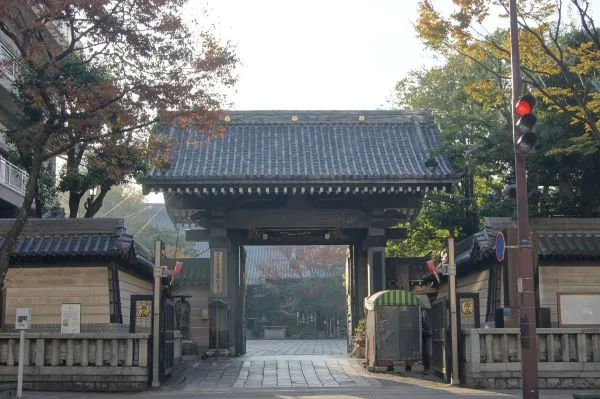
In addition, what will catch the attention of history buffs is the temple’s crest. In contrast to the crest used by other Pureland sect temples in Japan that uses wisteria, Mangyō-ji uses the Mōri clan’s crest, the flower of sagittaria trifolia.
For more information, please refer to our article on Mangyō-ji Temple !
If you have been amazed by the Great Buddha Statue in Kamakura or Nara, how about being astounded again in Hakata?
Tōchō-ji is the temple that houses Japan’s Biggest Gautama Buddha Sitting Statue. We are sure that the 10.8-meter-tall Buddha will be another jaw-dropping statue to see!
For more information, please refer to our Tōchō-ji article.

View this post on Instagram A post shared by 風 (@nanigotojya)
If you practice zen or meditate regularly, you might be interested in Shōfuku-ji, the first Zen temple in Japan!
The temple is also another spot in Hakata that will excite all cat lovers! The Hakata-bei Wall (博多塀) on the precinct is really amazing to see too.
For more information, please refer to our Shōfuku-ji article!
Fun fact: the method of making food made from flour in Japan, such as udon and soba noodles and buns, originates from Hakata (according to Jōten-ji’s history).
In addition to food, the famous Hakata-ori silk fabric, as well as the Hakata Gion Yamakasa Festival, are all related to a monk called Shōichi Kokushi (聖一国師) who founded Jōten-ji.
For more information, please refer to our article on Jōten-ji Temple !
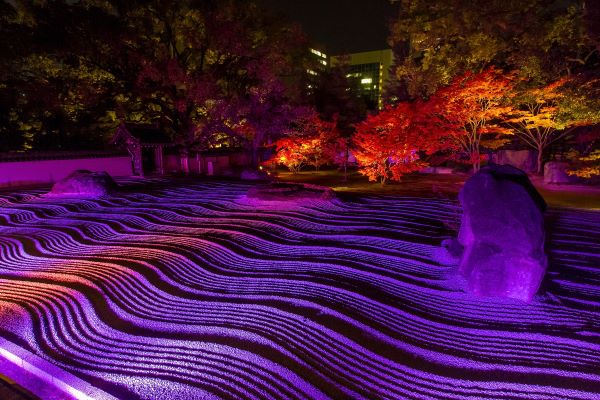
View this post on Instagram A post shared by たかぎー (@takagee3374)
If the recent reviews of Karo no Uron have left you unsettled, there is another one that we recommend on the other side of the Gion Station. It is the closest restaurant to Shōichi Kokushi’s (聖一国師) Jōten-ji Temple (承天寺) and is said to be reproducing the taste from the Kamakura period (1192 – 1333).
The unique thing about the udon noodles made at Shungetsu-an is the wheat that is used to make the noodles. They are made with wheat germ. Containing a lot more minerals and fiber, the noodles are much healthier than normal udon.
The burdock noodle dishes are still the best. But, the surprising fact about Shungetsu-an is that although it specializes in udon noodles, the most popular dish is its burdock soba noodles (´▽`*).
Tips: ☛ Check with the staff to see if they still serve up to three portions of noodles for free. If that is the case, you can request additional noodles when you put through your order. ☛ From 2 pm, check with the staff to see if they still offer unlimited noodles for free. ☛ Arrive there early, it is a restaurant that has queues during lunch hours.
Shungetsu-an Jōtenjimae Store’s Business Hours and Access Information
- 11 am to around 4 pm on weekdays
- 11 am to 3:30 pm on Saturdays
- The restaurant will be closed if all noodles made for the day are sold out.
- From Hakata Station (博多駅), it is around an 8-minute walk.
- From Fukuoka Subway’s Gion Station (祇園駅), it is around a 5-minute walk.
The best place to go for Kabuki plays in the Kyūshū region is probably Hakataza Theater in the Nakasu area in Hakata.
Plays in various genres, musicals, and other performance arts are scheduled to be on stage daily. Not only is the theater’s interior luxuriously designed, but the customer service is definitely five stars if not six!

How to Buy/Reserve a Hakataza Theater Ticket and How to Get to Hatakaza Theater
- If you don’t speak/read Japanese, the easiest way to purchase a ticket is to head to their ticket office on the 2nd floor from 10 am to 5 pm.
- If you read Japanese, you can make a reservation through their official website HERE .
- From Hakata Station (博多駅), it is around a 20-minute walk.
- From Fukuoka Subway’s Nakasukakawabata Station (中洲川端駅), it is a 1-minute walk.
If you enjoy visiting galleries and art museums, you might want to spend an hour or so at the Fukuoka Asian Art Museum.
The museum that is conveniently located next to Fukuoka City Subway’s Nakasukawabata Station (中洲川端駅) was opened in 1999 as a window for cultural exchange between Japan and other Asian countries.
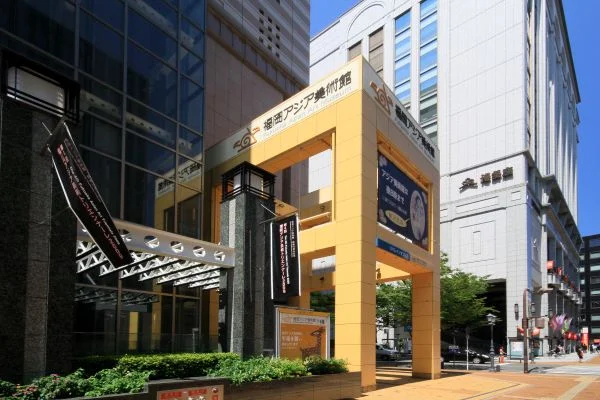
Although the museum isn’t big, it has a wide range of artworks from different countries in Asia. English notation for the artworks is available for the permanent exhibition. You can also download their free app to your device for further details and information on the artwork.
Apart from the permanent artworks on display, interesting special temporary exhibitions are also held throughout the year (The Anime and Ghibli exhibition, for example). From time to time, there might even be small folk music concerts!
If you want to take a break and rest, head to their café for some desserts. There is even a kids’ corner for young children to play in as you enjoy a cup of coffee or read a book from the bookshelf.
Fukuoka Asian Art Museum’s Opening Hours, Admission Fee, and Access Information
- The last admission is 30 minutes before the museum’s closing time.
- The museum is closed on Wednesdays and from the 26th of December to the 1st of January.
- If Wednesday is a public holiday, it will close the next business day.
- 200 yen for adults
- 150 yen for senior high school and university students
- Free otherwise
- Extra charges apply for entry to special exhibitions.
- Fukuoka Asian Art Museum is located next to Fukuoka City Subway’s Nakasukawabata Station’s (中洲川端駅) exit no. 6.

If you are a foodie like us, the first thing you will know about Hakata is probably the Yatai food stalls.
If you take a night stroll around the areas close to and along the Naka River (那珂川), you will find many food stalls being set up and running. The Yatai stalls are considered one of Hakata’s most popular attractions, particularly amongst tourists.
The history of the Yatai stalls started after World War II. During the postwar turmoil, stalls were set up along the streets and parks in the city to serve hungry locals. Japan’s first Yatai Stalls Regulation (屋台基本条例) was also enacted during that time.
Because there are so many stalls clustered in many different areas, we recommend you check out the Yatai map HERE to get a visual idea of where the stalls are located.

For information on each individual stall, please refer to the official website HERE to pinpoint which ones you want to visit. Don’t be like us, who didn’t get to enjoy the stalls because we didn’t do our homework beforehand and gave up because we couldn’t find the area that had more stalls!
Please refer to the official How to Enjoy Yatai Guide HERE before you head to the food stalls.

Anyone who knows about Japan also knows about Tokyo Tower. But many may not know or hear of its youngest sibling, Hakata Port Tower. The tower at Hakata Port is the last tower in Japan designed by a Japanese architect and engineer, Naitō Tachū (内藤多仲).
Completed in 1964, the tower was the symbol of the large leisure facility, Hakata Paradise. Nowadays, the complex is a commercial facility that aims to be a place for relaxation for locals.
As tourists, in addition to shopping and dining, head to the observatory 70 meters above the ground for a panoramic view of the ferries and boats, as well as airplanes landing and taking off at the Hakata Airport located opposite the tower. It is the only few observatories in the urban areas that won’t charge you an admission fee!
During the night, the tower lights up in different colors throughout the year.
Hakata Port Tower’s Opening Hours and Access Information
- The last admission is at 4:40 pm.
- The tower is also closed from the 29th of December to the 3rd of January.
- From Hakata Station (博多駅), take bus route 99 and get off at Hakata-futo (博多ふ頭).
- From the Tenjin area (天神), take bus route 99 from Tenjin Solaria Stage-mae 2A (天神ソラリアステージ前2A) and get off at Hakata-futo.

On the south end of Higashi Park (東公園), close to JR Yoshizuka Station, Tōkaebisu Shrine is a usually quiet area. However, during the Tōkaebisu Festival, at least one million people would flock to the shrine from the 8th to the 11th of January!
If you want to know the reason for it, please refer to our Tōkaebisu Shrine article (=゚ω゚)ノ.
Discover Other Attractions in the Wider Fukuoka City
If you have more time to spend in Fukuoka, the city has a couple more awesome destinations that might interest you, including islands with vast, stunning flower fields.
For more information, please refer to our article on Fukuoka City !
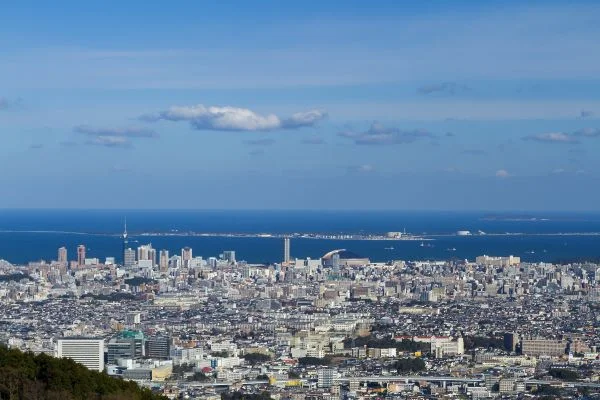
Related Posts
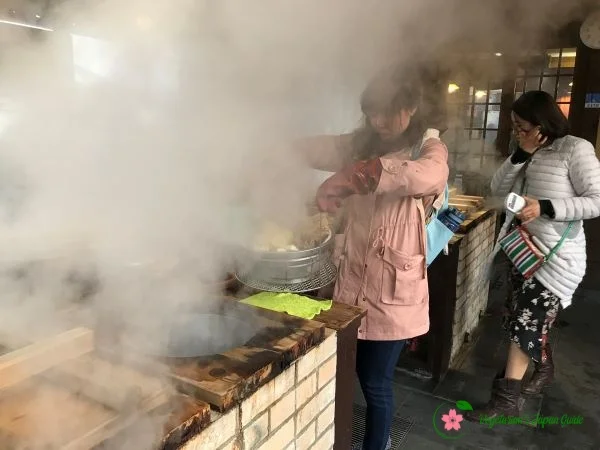
Jigoku Mushi Kōbō Kannawa’s Delicious Vegan Options
When you come to Beppu, a city that has a lot of steam coming out of the hot spring underground, you won’t want to miss…
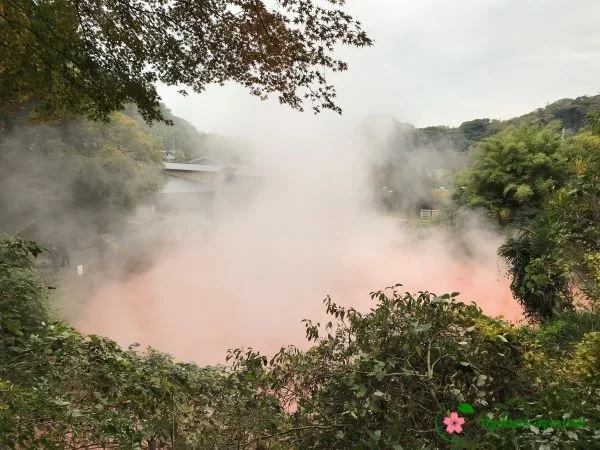
A Tour to the Hells of Beppu – Japan’s Scariest Onsen Town
From ancient times, the people who lived in Beppu (別府) in Ōita Prefecture suffered from the heat generated by volcanic activities. Crops could hardly be…
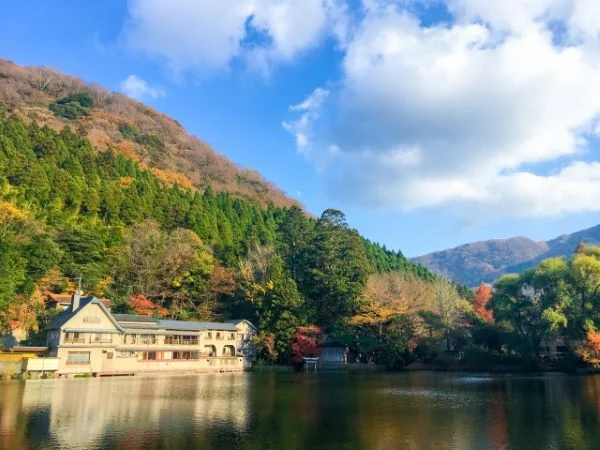
Yufuin – Experience the Most Unique Onsen Resort in Japan
Yufuin (由布院 or 湯布院) is an onsen resort town in Ōita Prefecture in northern Kyūshū. Unlike most onsen towns in Japan, this resort, backed by…
Leave a Comment Cancel Reply
Your email address will not be published. Required fields are marked *
Save my name, email, and website in this browser for the next time I comment.

1-Day Hakata Walking Tour
- Fukuoka , Tour Reviews , Walking Tours
By pure coincidence, the 1-Day Hakata Walking Tour offers an immersive journey through the captivating city of Hakata. Led by a knowledgeable guide, this tour provides a fascinating exploration of Hakata’s rich history and vibrant culture.
From the renowned Tochoji Temple to a sake brewery visit, you will have the chance to discover the city’s hidden gems and indulge in its finest offerings. Along the way, a stroll through the bustling Kawabatadori Shopping Street and a tranquil retreat at Ohori Park await.
With convenient train tickets provided, transportation between attractions is seamless. Previous participants have praised the friendly guides and unforgettable experiences they encountered. Whether you’re a history buff, nature enthusiast , or food and drink lover, the 1-Day Hakata Walking Tour promises an enriching and enjoyable adventure.
Great News! You can reserve your spot for free with Viator. You can easliy cancel any time up to 1 day before without paying anything.
Quick Takeaways
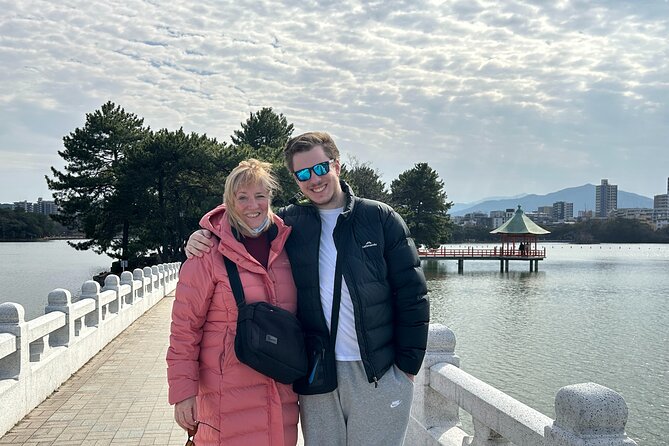
- The 1-Day Hakata Walking Tour offers a comprehensive exploration of Hakata with a private guide.
- The tour includes visits to Tochoji Temple , Ohori Park , and a sake brewery.
- Pickup for the tour is provided at the hotel reception, and there is a full refund for cancellations made at least 24 hours in advance.
- The tour has received positive reviews, with an overall rating of 5.0 based on 6 reviews, highlighting memorable experiences , surprise arrangements , and praise for the tour guide.
Not for you? Here's a few more great tours and experiences nearby.
- Private Transfer From Kitakyushu Cruise Port to Fukuoka Hotels
- Private Transfer From Fukuoka Airport (Fuk) to Sasebo Cruise Port
- Private Transfer From Kumamoto Cruise Port to FUKuoka Airport FUK
Tour Overview and Details
The tour offers a comprehensive exploration of Hakata with the assistance of a private guide.
One of the highlights of the tour is a visit to the Tochoji Temple, a famous Buddhist temple known for its impressive wooden Buddha statue. The guide will provide insightful information about the temple’s history and significance.
Another notable stop on the tour is Ohori Park, a beautiful park located in the heart of the city. Visitors can stroll along the park’s picturesque walking paths and admire the tranquil lake surrounded by cherry blossom trees.
The tour also includes a visit to a sake brewery, where guests can learn about the traditional brewing process and sample different varieties of sake.
Pickup and Cancellation Details
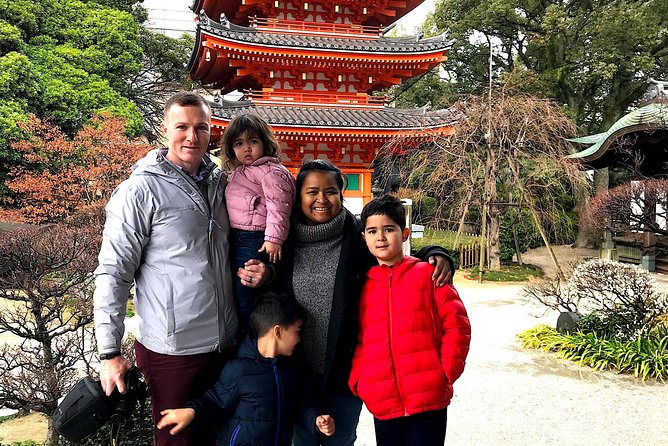
The guide will collect guests at the hotel reception for the Hakata walking tour.
When it comes to cancellations, it’s important to note the refund policy . If you need to cancel your tour, you’ll receive a full refund if you do so at least 24 hours in advance of the start time. However, if you cancel within 24 hours of the start time, no refund will be given. Plus, any changes made less than 24 hours before the start time won’t be accepted. It’s crucial to keep in mind that the cut-off times for cancellations and changes are based on the local time of the experience. Therefore, be sure to plan accordingly.
The hotel pickup process ensures a convenient and hassle-free start to your walking tour.
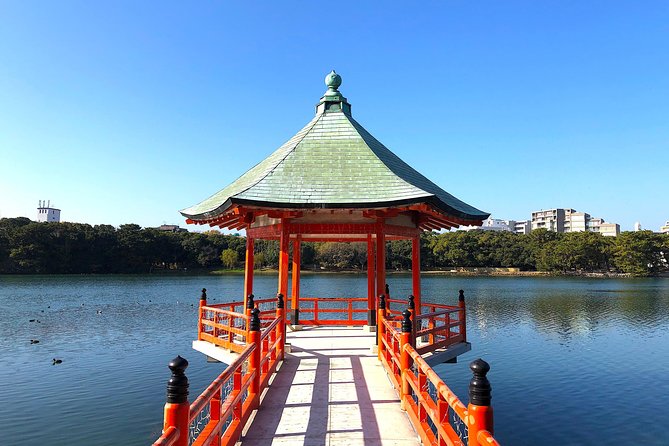
With an overall rating of 5.0 based on 6 reviews, visitors have praised the Day Hakata Walking Tour as an exceptional experience. One of the positive reviews highlighted a memorable walking tour of Fukuoka City. Another reviewer mentioned a good walking tour with a surprise birthday dinner arrangement, which added a special touch to the experience. Plus, a great tour with an amazing tour guide was also mentioned in another positive review . These reviews showcase the high level of satisfaction among visitors who have taken part in the Day Hakata Walking Tour. This tour not only provides an opportunity to explore the beautiful shrines and temples of Hakata but also offers unexpected surprises like a personalized birthday celebration. It is clear that the Day Hakata Walking Tour has left a lasting impression on its participants.
Questions and Assistance
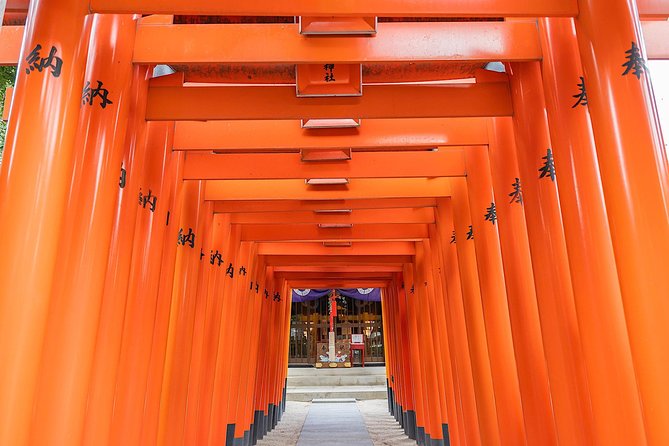
Visitors who have any questions or require assistance regarding the Day Hakata Walking Tour can find helpful information by visiting the Viator Help Center. The Help Center is a valuable resource that provides answers to common FAQs and offers guidance on various aspects of the tour. Here are three key points to keep in mind:
- Where to find help: The Viator Help Center is accessible online, making it convenient for visitors to seek assistance from anywhere at any time. The Help Center features a search function that allows users to find relevant information quickly and easily.
- Common FAQs : The Help Center addresses frequently asked questions about the Day Hakata Walking Tour. Visitors can find answers to queries about tour details, pickup and cancellation policies, as well as information on pricing and terms.
- Personalized assistance: Along With the Help Center, visitors can also reach out to Viator’s customer support team for personalized assistance. They can provide further clarification or address any specific concerns that may not be covered in the FAQs.
With these resources available, visitors can feel confident that their questions and concerns regarding the Day Hakata Walking Tour will be addressed promptly and effectively.
Price and Terms
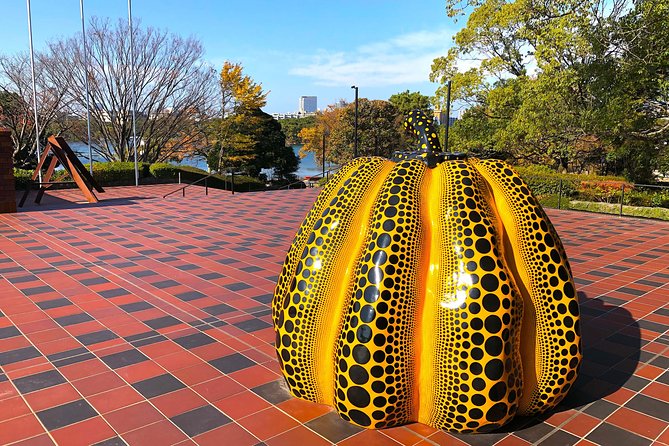
The price and terms for the Day Hakata Walking Tour vary based on group size . The cost starts from $126.96 per person, but it may change depending on the number of participants. This ensures that groups of different sizes can enjoy the tour at a reasonable price.
By adjusting the cost based on group size , the tour operators aim to make the experience accessible to a wider range of people. It also allows for a more personalized experience, as smaller groups can receive more attention from the guide.
This flexibility in pricing ensures that everyone can have the opportunity to explore Hakata’s beautiful shrines and temples , stroll along Kawabatadori Shopping Street, and visit Ohori Park, all while enjoying the knowledgeable guidance of a private tour guide.
Frequently Asked Questions
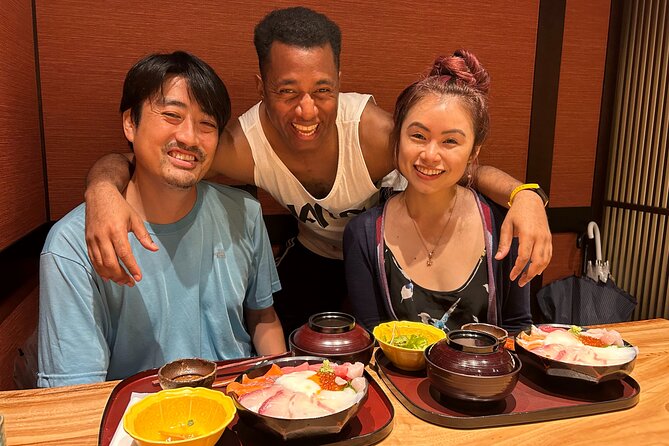
Can I Customize the Itinerary of the Day Hakata Walking Tour?
Yes, customization options are available for the Day Hakata Walking Tour. Visitors can work with their private guide to tailor the itinerary based on their preferences. The tour length can also be adjusted accordingly.
Are Meals and Drinks Included in the Tour Price?
Meals and drinks are included in the tour price, ensuring a satisfying experience. Vegetarian options are available, catering to different dietary preferences. Travelers can enjoy delicious food while exploring the attractions of the Day Hakata Walking Tour.
Is Transportation Between Attractions Included in the Tour?
Transportation between attractions is included in the tour. The guide will provide train tickets for faster exploration. This ensures that participants can easily move from one location to another. There are no alternative tour options for transportation.
Can I Book the Tour for a Specific Date and Time?
Yes, you can book the tour for a specific date and time. The booking process offers various availability options to choose from, ensuring you can schedule the tour according to your preferred date and time.
Are There Any Age Restrictions for Participating in the Day Hakata Walking Tour?
There are no age restrictions for participating in the Day Hakata Walking Tour. The tour is suitable for individuals of all ages, allowing everyone to explore the beautiful shrines, temples, and attractions of Hakata.
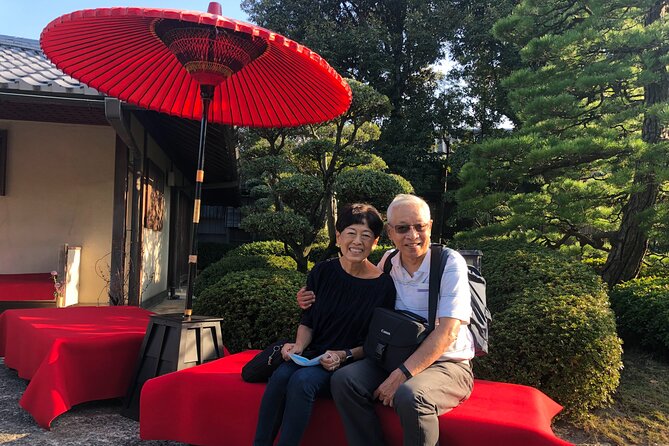
To sum it up, the Day Hakata Walking Tour offers an immersive and captivating experience for visitors looking to explore the rich history and vibrant culture of Hakata.
With knowledgeable guides, convenient transportation , and a variety of attractions to visit, participants are guaranteed a memorable and enriching day.
Whether you’re interested in shrines and temples, sake tasting , shopping, or enjoying the tranquility of Ohori Park, this tour has a lot to offer.
Don’t miss out on this opportunity to uncover the hidden gems of Hakata.
Related Posts

Private Airport Transfer Kansai Airport in Kyoto Using Hiace
- December 31, 2023

Private Miyajima Oyster and Sakurao Whisky Distillery Tour

Seasonal Shuttle to Minami-Sado
Trending now.

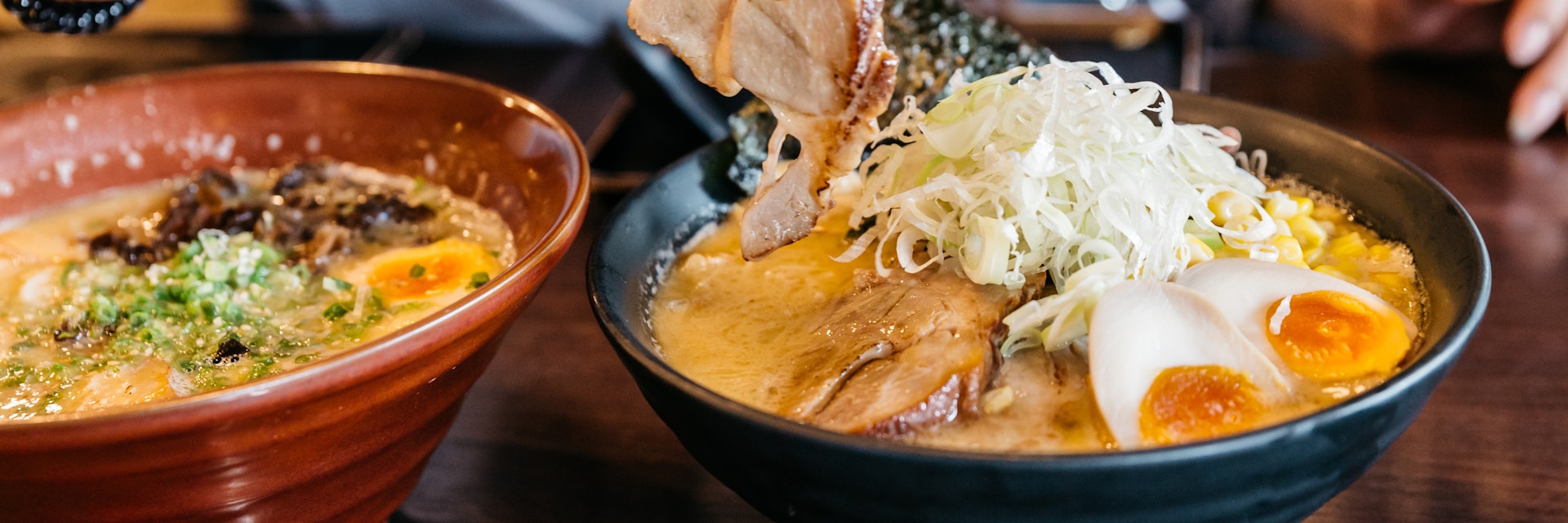
© Getty Images/iStockphoto

Sunny, friendly Fukuoka (福岡) is Kyūshū's largest city and Japan's eighth-largest population centre. It's made up of two former towns: the castle town of Fukuoka on the west bank of the Naka-gawa and the merchant town of Hakata on the east bank. Although the two towns merged in 1889 as Fukuoka, the name Hakata is still widely in use (for instance, it's Fukuoka Airport but Hakata Station) and a cultural touchpoint.
Best Things to Do
Leave the planning to a local expert.
Experience the real Fukuoka. Let a local expert handle the planning for you.
Attractions
Must-see attractions.

Hakata Machiya Furusato-kan
Spread over three machiya (traditional Japanese townhouses), this folk museum re-creates a Hakata nagare (neighbourhood unit) from the late Meiji era…

Fukuoka Asian Art Museum
On the upper floors of the Hakata Riverain mall, this large museum houses the world-renowned Asia Gallery, and additional galleries for special…

Ōhori-kōen Japanese Garden
Set within the expansive grounds of Ōhori-kōen, adjacent to the remains of Fukuoka's once-grand castle, this traditional (though constructed in 1984) 12…

This small but pretty garden and teahouse was built by a Meiji-era merchant in 1906 and offers a couple of paths, a rushing waterfall and tea ceremony. In…

Shikanoshima
Delightfully rural, this island has fresh-seafood restaurants that line the harbour-side streets. Ferries depart hourly (¥670, 33 minutes) from Bayside…

Kushida-jinja
The intimate Kushida-jinja, municipal Shintō shrine of Hakata, traces its history to AD 757 and sponsors the Hakata Gion Yamakasa Matsuri, in which…

Tōchō-ji houses the Fukuoka Daibutsu, Japan's largest seated wooden Buddha (10.8m high, 30 tonnes, completed in 1992) and some impressively carved Kannon …

Shōfuku-ji is considered the oldest Zen temple in Japan, founded in 1195 by Eisai, who introduced Zen and tea to Japan; the nation's first tea plants are…
Top picks from our travel experts
8 of the top things to do in laid-back fukuoka, japan.

ACROS Fukuoka
Inside this unique building are a tourist-information centre (1st floor), cultural-information centre (2nd floor) and craft gallery. The building itself…

Fukuoka Tower
Standing above the Momochi district is 234m-tall Fukuoka Tower, Japan's tallest seaside spire, a symbol of the city and mostly hollow (its main purpose is…

Fukuoka-jō & Ōhori-kōen
Only the walls of Fukuoka-jō (Fukuoka Castle) remain, but the castle's hilltop site (Maizuru-kōen) provides good panoramas of the city and great views of…

Canal City is Fukuoka's biggest mall, boasting an eponymous artificial canal with illuminated fountain symphony, a multiplex cinema, a playhouse and about…
Plan with a local
Experience the real Japan
Let a local expert craft your dream trip.

Latest stories from Fukuoka
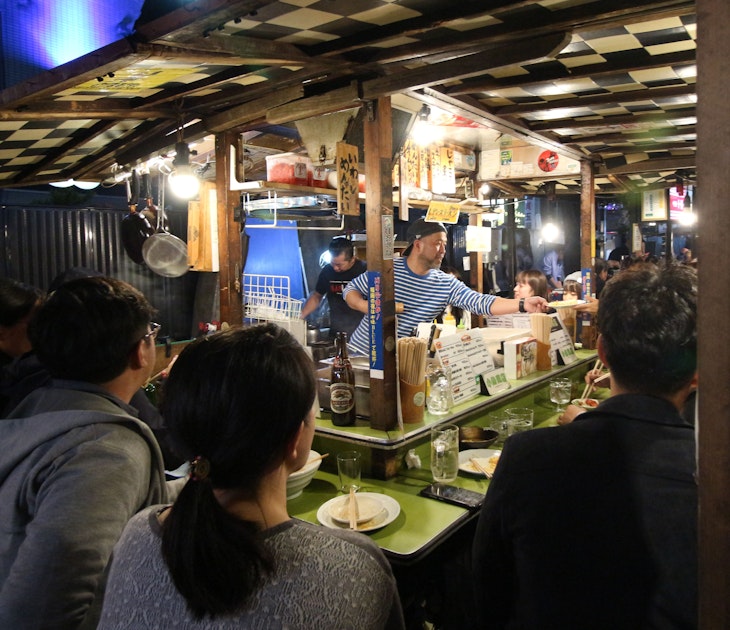
Jan 3, 2024 • 7 min read
From its iconic dining culture to superb shopping and cultural attractions, here are the best things to do in Fukuoka, Japan.
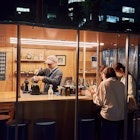
Nov 15, 2022 • 15 min read

Nov 28, 2019 • 1 min read
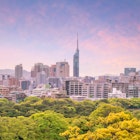
Oct 15, 2019 • 5 min read
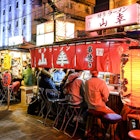
Apr 21, 2017 • 7 min read
in partnership with getyourguide
Book popular activities in Fukuoka
Purchase our award-winning guidebooks.
Get to the heart of Fukuoka with one of our in-depth, award-winning guidebooks, covering maps, itineraries, and expert guidance.
- Tours & Experiences
- Tailor-made Trips
- Bahasa Indonesia
We are happy to see you again!
Continue with
Or use email.
No Account? Create one
Create account
Already have an account? Sign in
Quickly Sign up with
I agree to Japan Travel's Terms of Service and Privacy Policy . Terms of--> and acknowledge that Japan Travel's Privacy--> applies to me.-->
Email reset password link
Please check your inbox and click the link we will send to you.
- Transportation
Hakata Station
- Share on Facebook
- Share on Twitter
- Copy link to share
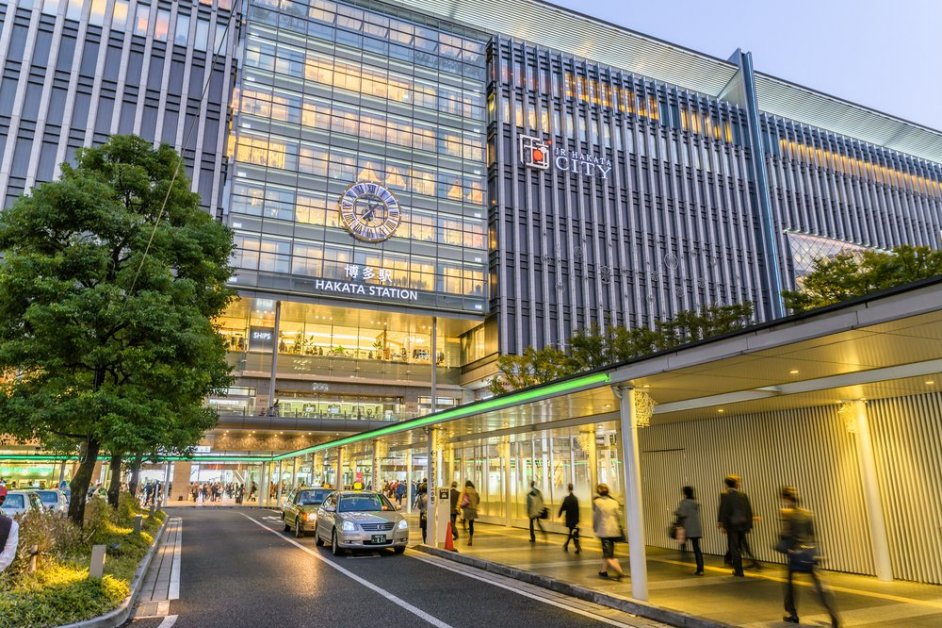
JR Hakata Station is Fukuoka’s biggest and the busiest in Kyushu. First opened in 1889, the station provides access to all of Kyushu as well as the rest of Japan with the Shinkansen. It’s also the key station for travelling around the city. It was remodeled in 2011, creating more space, more platforms, more shops, and more restaurants. The station has a modern, open feel, and even at night it’s bright and welcoming.
The station connects to the Kuko (Airport) Line of the city subway, the Kagoshima Main Line, the Fukuhoku-Yutaka Line, and the Kyushu and Sanyo Shinkansen Lines. The subway is recommended for places like Ohori Park and the Zoo . Buses to Tenjin , Canal City , Fukuoka Tower , and the Fukuoka Dome are straight outside the Hakata Exit at the street and in the bus centre building to the right after exiting. The bus center also hosts long distance buses. Kushida Shrine , which hosts Yamakasa , Fukuoka's premiere festival, as well as several temples and the Hakata Machiya Folk Museum , are a short walk away. If you’re staying in Fukuoka or just travelling on to other destinations in Kyushu, South Korea via ferry, or to international flights, you’ll no doubt be passing through Hakata Station.
The station staff are trained professionals, even those simply greeting you at the ticket gates. In the middle of the ground floor you will find a large information centre with English speaking staff where you can get maps and pamphlets about Fukuoka City and the surrounding areas and even get help organising sightseeing trips and accommodation. There is a telephone translation service available in Chinese, Korean and English. Nearby is also a large JR travel office.
The station serves travelers as well as the inhabitants of Fukuoka and is a destination in and of itself. This is one of Fukuoka’s major shopping and entertainment areas; the many, many restaurants and shops make it tempting to get there well before your train leaves. You can pop into a café, sit back and watch the salarymen go by. Quick restaurants are mostly in the basement level and there are two floors of fine dining at the top of the ten-story JR Hakata City building above the tracks. Besides the restaurants on the upper levels, there is also a top-notch multi-screen cinema complex and a rooftop terrace with views, a shrine, and a kiddie train. On the ground floor, on the north side of the Shinkansen gates, there are also several kiosks where you can buy good souvenirs. The station houses two department stores, Hankyu and Tokyo Hands, as well as a large number of shops on the second to eighth floors and the adjacent bus centre building. Although Hakata is the city’s business district, the area surrounding the station is vibrant; during the day you can walk the 10 minutes to Canal City, or in the evening you can visit one of the nearby karaoke boxes, bars or izakayas and head home on the last train!
Nearby Station
- Yamanote Line
Opening Hours
Phone number, general amenities.
- Information Counter
- Free guides/pamphlets
Payment Method
- Credit cards accepted
- Pay by cash
Accessibility
- Multi-purpose toilet
Language support
Upcoming events, related articles.

Hakata Christmas Market
Enjoy the great Christmas festivities and lights at the Hakata Christmas Market right outside JR Hakata Station

National Plum Wine Festival in Fukuoka 2025
The National Plum Wine Festival at JR Hakata Station serves to highlight all things umeshu, with over 150 types from brewers across..
Why not review more places in Fukuoka?
Help rate this location

Your overall rating of this spot
Near hakata station.
- Accommodation
- Restaurants
- Things to do

The b hakata, Fukuoka
The B Hakata is a business hotel 5 minutes away from JR Hakata train station, and is located in the Hakata ward of Fukuoka City.

Montan Hakata Hostel in Fukuoka
Montan Hakata Hostel, located close to International Fukuoka Airport, is the perfect place for travelers looking for cheap accommodation...
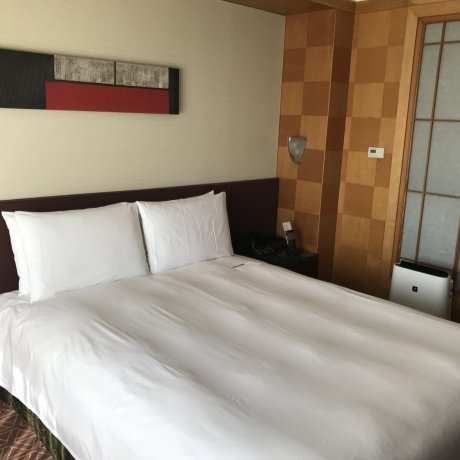
Staying at Grand Hyatt Fukuoka
Fukuoka's Grand Hyatt Hotel provides a convenient base to explore the city. The hotel also offers a range of amenities to make..

Goodbeer Stand
Goodbeer Stand has 25 beers on tap at any one time, including both local and international brews. There are also some great, hearty..

Sherbet Color Afternoon Tea 2021
A limited-time afternoon tea event at the Miyako Hotel Hakata will incorporate the pastel colors of sherbet into the dishes on offer...
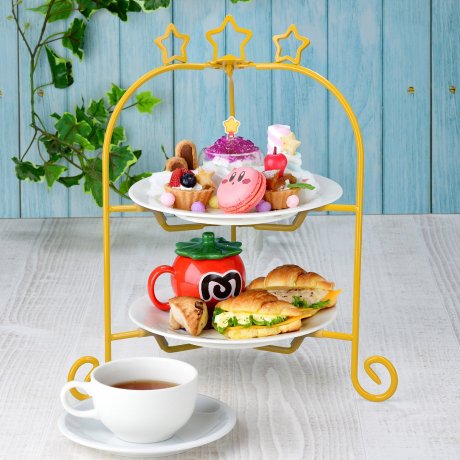
Kirby Afternoon Tea 2021
For a limited time, the Kirby Cafe in Fukuoka will be hosting a Fountain of Dreams Afternoon Tea event. The afternoon tea set contains..
Canal City Hakata
Canal City Hakata (キャナルシティ博多) is a large shopping and entertainment complex in Fukuoka, Japan. Called the "city within the city," it boasts..
Kushida Shrine
The Kushida Shrine of Hakata is one of the oldest shrines in Fukuoka. Famous for its Hakata Gion Yamakasa Festival, this shrine has many amazing attractions..
Fukuoka Kokusai Center
Sumo is the national sport of Japan and holds a special place in the hearts and minds of the nation. Fukuoka Kokusai Center is to Fukuoka what the Ryogoku..
Let us know how we can help.
Help us improve JapanTravel.com
We welcome any suggestions regarding this content. Your feedback is confidential and will be used to help improve this page.
Suggest an edit
https://en.japantravel.com/places/fukuoka/hakata-station/377
Thank you for your support!
Your feedback has been sent.
- Media & Industry
- Meetings & Events
- Select Language 简体中文 繁體中文(香港) 繁體中文(臺灣) India (English) Bahasa Indonesia 한국어 ภาษาไทย Tiếng Việt Singapore (English) Philippines (English) Malaysia (English) Australia/New Zealand (English) Français Deutsch Italiano Español United Kingdom (English) Nordic countries(English) Canada (English) Canada (Français) United States (English) Mexico (español) Português العربية Japan(日本語) Global (English)
- India (English)
- Bahasa Indonesia
- Singapore (English)
- Philippines (English)
- Malaysia (English)
- Australia/New Zealand (English)
- United Kingdom (English)
- Nordic countries(English)
- Canada (English)
- Canada (Français)
- United States (English)
- Mexico (español)
- Global (English)
- Fujiyoshida
- Shimonoseki
- Ishigaki Island
- Miyako Island
- Kerama Island
- Tokyo Island
- Koka & Shigaraki
- Hida Takayama
- Ginza, Nihonbashi
- Beppu & Yufuin (Onsen)
- Ginzan Onsen
- Nagasaki Islands

- Kumano Kodo
- Shikoku Karst
- Amami Oshima
- Hachimantai
- Omihachiman
- Aizuwakamatsu

- Diving in Japan
- Skiing in Japan
- Seasonal Flowers in Japan
- Sustainable Outdoors
- Off the Beaten Track in Japan
- Scenic Spots
- World Heritage
- Home Stays & Farm Stays

- Japanese Gardens
- Japanese Crafts
- Temple Stays
- Heritage Stays
- Festivals and Events
- Theater in Japan
- Japanese Tea Ceremony
- Cultural Experiences in Japan
- Culture in Japan

- Local Cuisine Eastern Japan
- Local Cuisine Western Japan
- Local Street Food
- Japan's Local Ekiben
- Japanese Whisky
- Vegetarian and Vegan Guide
- Sushi in Japan Guide
- Japanese Sake Breweries

- Art Museums
- Architecture
- Performing Arts
- Art Festivals
- Japanese Anime and Comics
- Japanese Ceramics
- Local Crafts

- Scenic Night Views
- Natural Wonders
- Theme Parks
- Samurai & Ninja
- Iconic Architecture

- Wellness Travel in Japan
- Japanese Ryokan Guide
- A Guide to Stargazing in Japan
- Relaxation in Japan
- Forest Bathing (Shinrin-yoku)

- Experiences in Japan
- Enjoy my Japan
- National Parks
- Japan's Local Treasures
- Japan Heritage
- Snow Like No Other
- Wonder Around Japan

- Visa Information
- Getting to Japan
- Airport Access
- COVID-19: Practical Information for Traveling to Japan
- Anime Tourism
- Countryside Stays
- Accessible Tourism
- Hokkaido Great Outdoors
- Scenic World Heritage in Tohoku
- Shikoku’s Nature and Traditions
- Southern Kyushu by Rail

- Traveling by Rail
- How to Travel by Train and Bus
- JR Rail Passes
- Scenic Railways
- Renting a Car
- Sustainable Travel in Japan
- Travel Brochures
- Useful Apps
- Online Reservation Sites
- Eco-friendly Accommodation
- Luxury Accommodations
- Traveling With a Disability
- Hands-free Travel
- How to Book a Certified Tour Guide
- Volunteer Guides
- Tourist Information Center

- Japanese Manners
- Spring in Japan
- Summer in Japan
- Autumn in Japan
- Winter in Japan
- Cherry Blossom Forecast
- Autumn Leaves Forecast

- Japan Visitor Hotline
- Travel Insurance in Japan
- Japan Safe Travel Information
- Accessibility in Japan
- Vegetarian Guide
- Muslim Travelers
- Safety Tips

- JAPAN Monthly Web Magazine
- Arts & Cultures
- Nature & Outdoor
- Festivals & Events
- Insider Blog
- Things to do
- Local Guides
- Food & drink
- Traditional
- Hokuriku Shinetsu

My Favorites
${v.desc | trunc(25)}
Planning a Trip to Japan?
Share your travel photos with us by hashtagging your images with #visitjapanjp
Kyushu Fukuoka Kyushu's historic gateway to Asia
- Destinations
Escape to a shoreline made for watersports, a mountainous interior full of trails, and world-class seafood and ramen
Fukuoka Prefecture's most famous attraction is Dazaifu Tenmangu , a shrine dedicated to the historical scholar and politician Michizane Sugawara and home to over 6,000 plum trees that blossom spectacularly each spring. The prefecture’s culinary specialties include sushi and other seafood dishes, yakitori or grilled skewers, motsunabe hot pot in the winter, and tonkotsu or pork broth ramen, best enjoyed at a local yatai or food stall. Located on the northern tip of Kyushu and boasting excellent transportation links, Fukuoka is an easy destination.
How to Get There
Fukuoka City is the prefecture’s main transport center, and from here you can easily board a train, bus or ferry that will take you to the rest of the prefecture and to other places in Kyushu. Hakata Station in Fukuoka City is the prefecture's rail hub, a terminus of both the Sanyo and Kyushu shinkansen lines. It takes one hour by shinkansen from Hiroshima to Fukuoka City, approximately two hours by train from Nagasaki to Fukuoka, and two hours by plane or five hours by shinkansen from Tokyo. Fukuoka is also very accessible from Asia via international flights.
- The annual plum blossom display at Dazaifu Tenmangu Shrine
- A tunnel of wisterias at Kawachi Fuji-en garden in Kitakyushu
- Itoshima Peninsula’s seaside culture: sandy beaches, music festivals and an active surf scene
- Luxurious boat rides through the canals of Yanagawa, and a meal of fresh local eel
Recommended for You
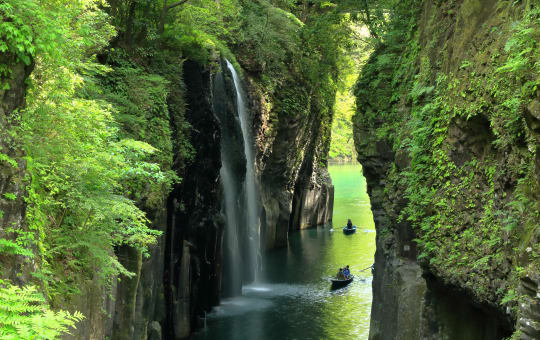
Cherry Blossoms
Forecast of first bloom
23 Mar 2024
Forecast of full bloom
02 Apr 2024
Explore Fukuoka by Area
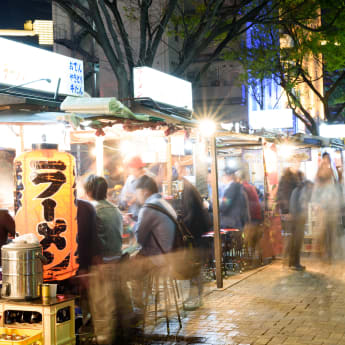
Trending Attractions in Fukuoka
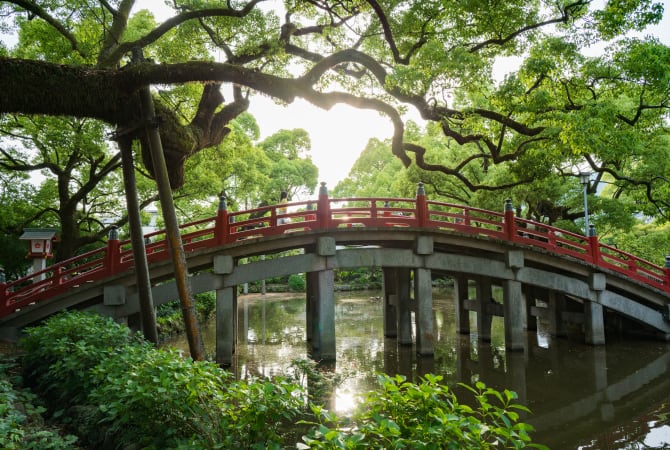
Local Specialties
Amaou Strawberries
Amaou is a variety of strawberry famous in Japan for its rich, sweet flavor. The name combines the Japanese words for red, round, big and delicious. Amaou strawberries are also used to make liqueur, jam and sweets.
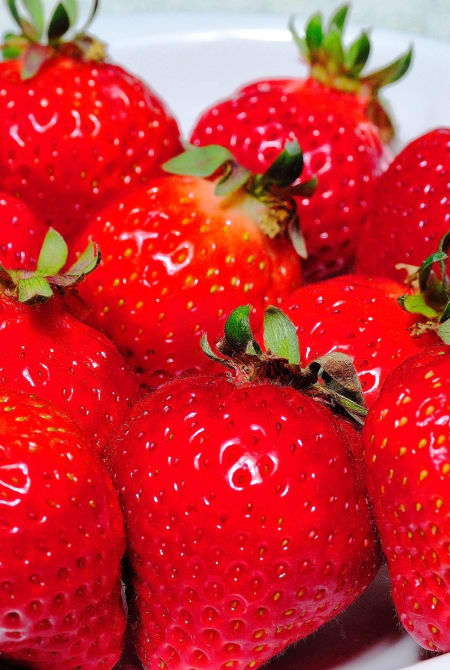
The Yame region in Fukuoka has ideal conditions for cultivating green tea. Tea growers here have been producing superb green tea using techniques passed down for 600 years. You can also find products that boast health benefits and combine honey with matcha powdered tea.
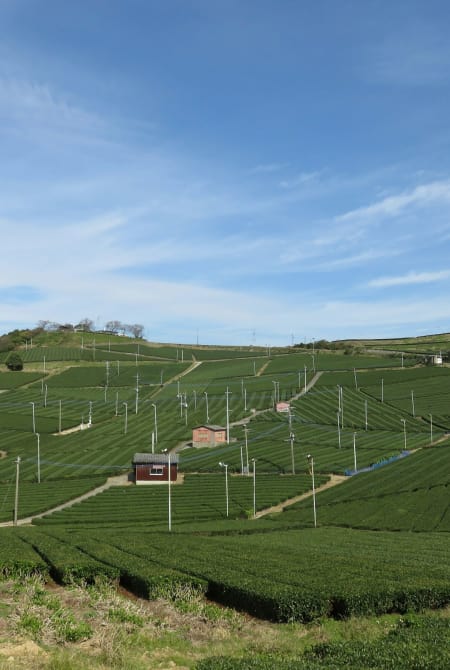
Baked Curry
A popular Fukuoka comfort food similar to a casserole or gratin. Rice, beefy Japanese curry, cheese and a raw egg are layered in a baking dish and baked. This will fill and warm you up for sure.
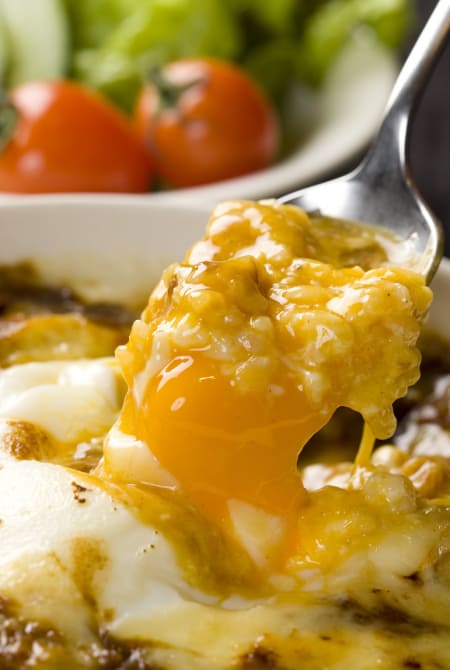
Hakata Bite-Sized Gyoza
Hitokuchi gyoza are not so different to regular dumplings, just a little smaller in size. Filled with minced pork and garlic, fried crispy on the outside and tender inside. Since they are smaller, though, you'll probably end up eating more of them.
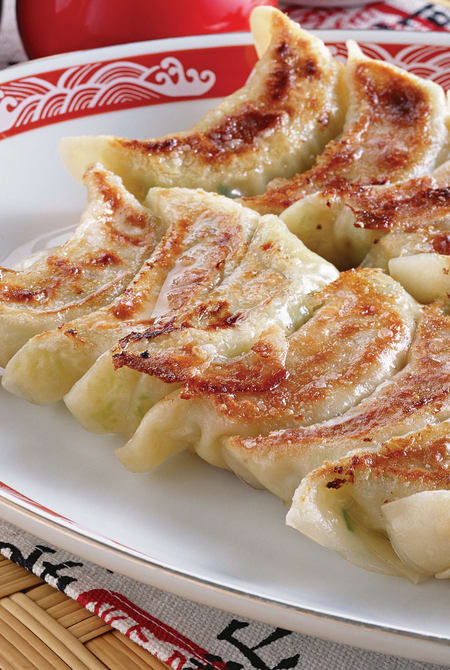
Fukuoka Motsu Nabe
Chefs in Fukuoka have made an art form of cooking with beef and pork tripe. Motsu nabe is a hot pot dish of tripe in a delicious soup made from soy sauce and garlic.
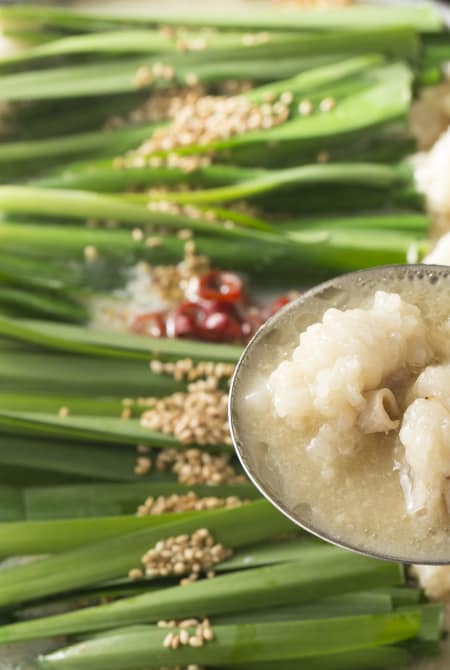
Mizutaki is a hot pot dish made by simmering chicken chunks with seasonal vegetables in a chicken stock broth, then serving with ponzu, a citrus-based sauce. It is said to have otiginated in Fukuoka around the middle of the late 19th century.
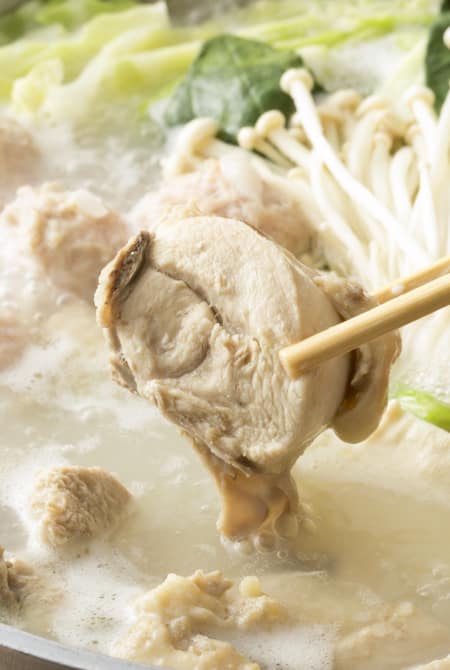
Yakitori—typically skewers of juicy chicken, often interspersed with vegetables and grilled over an open flame—is a hugely popular dish in Fukuoka. There's even a festival in Kurume dedicated to yakitori every October. Pairs well with beer.
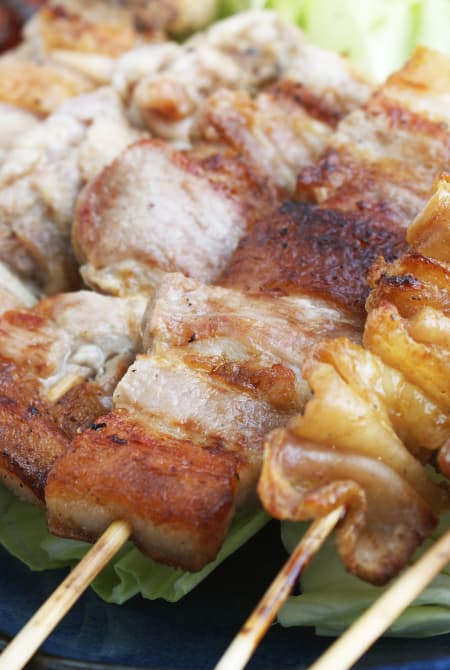
Tonkotsu Ramen
One of the world's best-known varieties of ramen, tonkotsu ramen is distinguished by its cloudy pork bone broth, thick slices of pork, thin noodles and minimal toppings. In Fukuoka, the birthplace of tonkotsu, you'll find the dish everywhere—at specialty restaurants, late-night eateries, street vendors and even train stations.
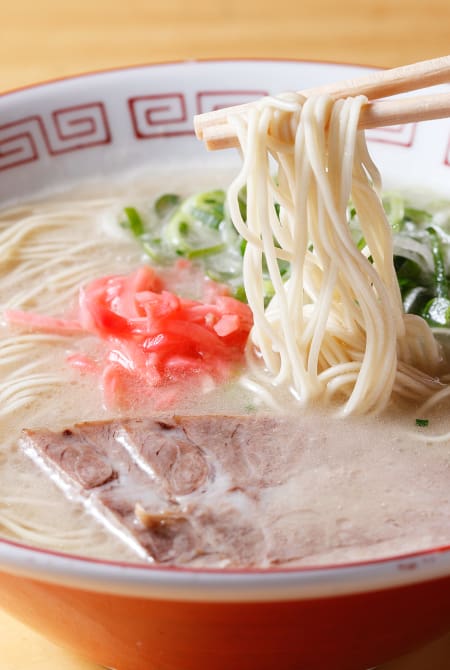
Kurume Textiles
Cool in summer and warm in winter, Kurume kasuri is a cotton textile that gets more comfy with wear. Made from resist-dyed indigo thread, the spectacular patterns and pictorial designs hand-woven into this fabric elevate it to an art form.
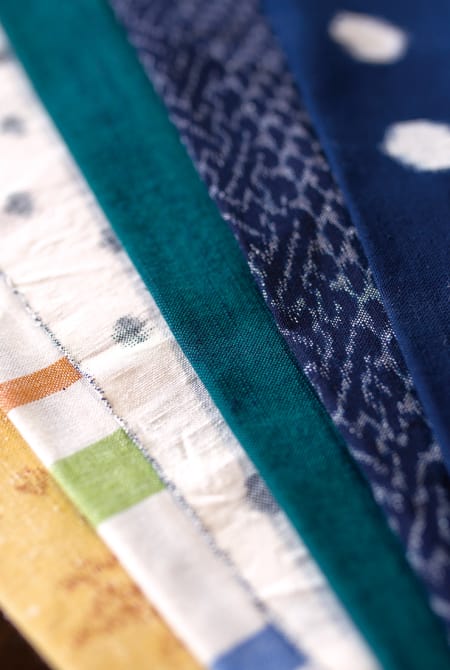
Koishiwara Ware
Classy and simple, Koishiwara yaki gets its charm from the eye-catching patterns that artisans achieve by skillfully stamping, planing and painting the finished clay form as it rotates on the potter’s wheel. This casual yet elegant pottery is perfect for everyday tableware and home decor. A good place to pick some up is in the village of Toho, where the pottery is crafted.
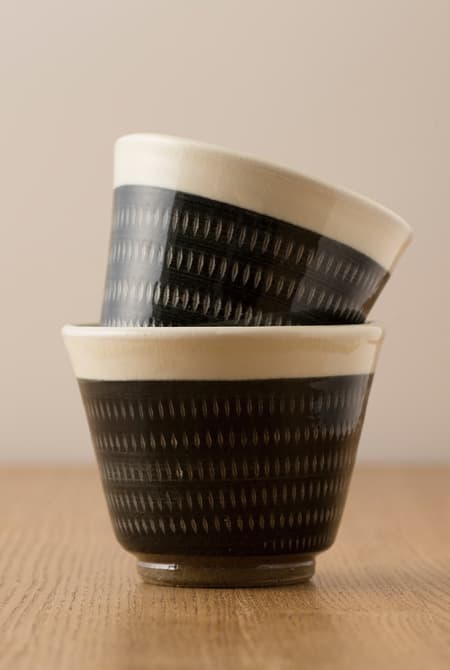
Hakata Textiles
Found in Fukuoka's Hakata district, Hakata ori Chinese weaving techniques were imported in the early 13th century. This dyed brocade, easy to tie and cinch, is perfect for obi sashes, and samurai belted their kimono and secured their scabbards with them. Hakata ori items now include card cases, wallets and other souvenir goods.
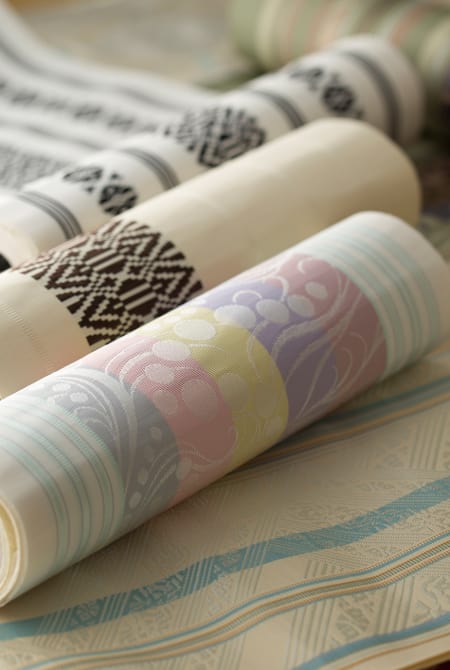
Hakata Dolls
The history of Hakata ningyo includes folkloric tales, archaeological artifacts and accounts of presentations at expos including the 1900 Paris World Fair. Today, these hand-painted clay dolls range from traditional characters like kimono-clad beautiful women to hulking sumo wrestlers and more.
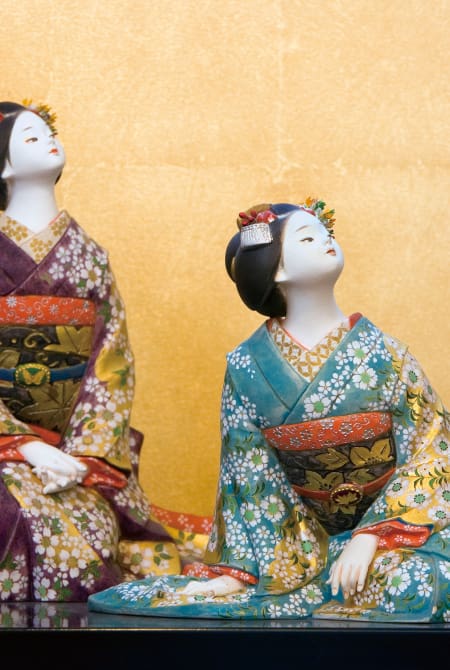

Seasonal Highlights
Dazaifu Tenmangu Shrine turns into Japan’s best spot plum blossoms, with an enormous display of 6,000 trees in flower. Cherry blossoms and tulips soon follow, bringing the entire prefecture to life.
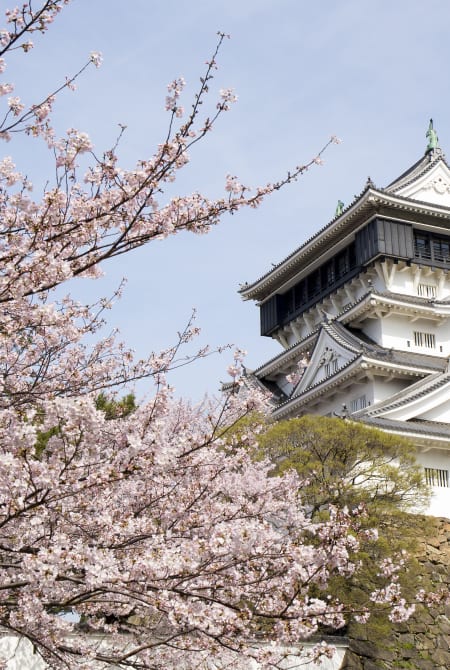
Locals leave the city for barbecues and beaches on Itoshima Peninsula or head to the mountains to enjoy the cooler air at altitude. Dine at a yatai or outdoor food stall.
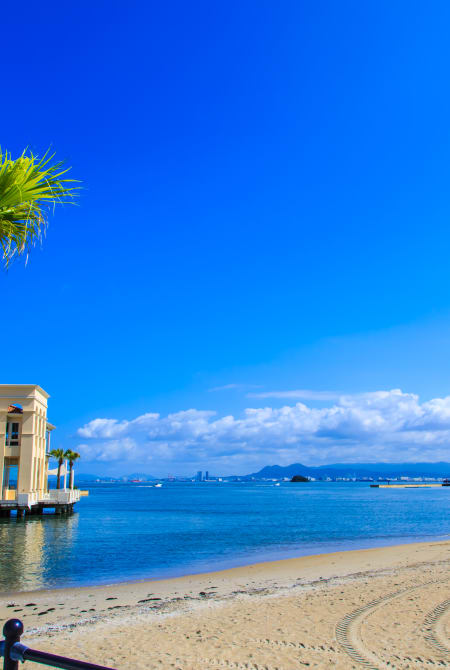
The weather is at its most enjoyable as Fukuoka takes on autumn hues, particularly the leaves on Mt. Hiko. The little island of Nokonoshima has a beautiful display of cosmos flowers.
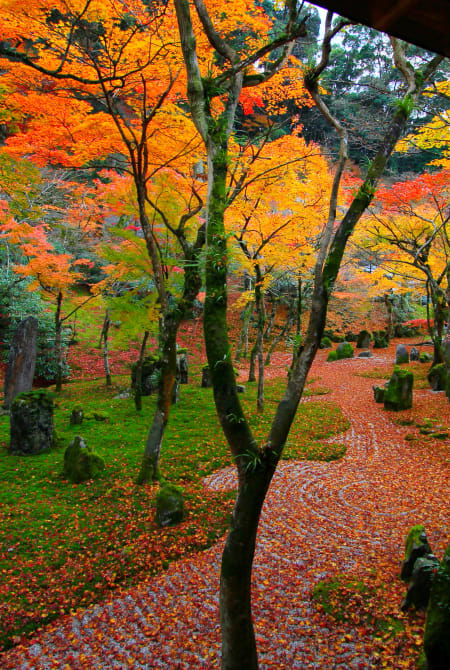
Settle down to a steaming bowl of motsunabe, a local stew that warms you to the core. Cruise through Yanagawa's canals under a heated kotatsu blanket or head out to Itoshima to sample winter oysters.
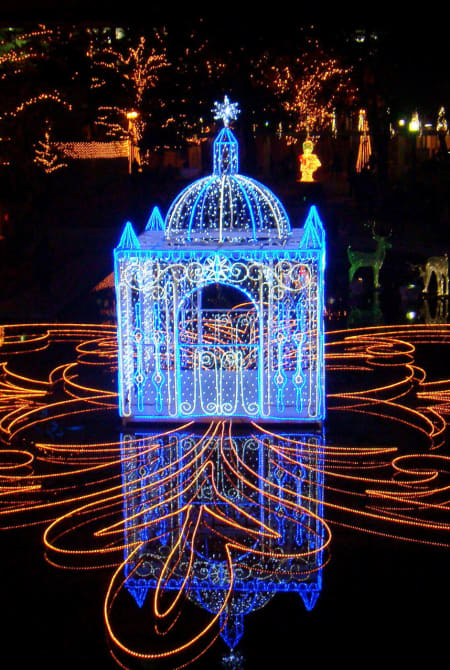
Related Links
Explore nearby prefectures.
Please Choose Your Language
Browse the JNTO site in one of multiple languages
Português
11 of the best Hakata ramen shops you should visit in Fukuoka
NAVITIME TRAVEL EDITOR
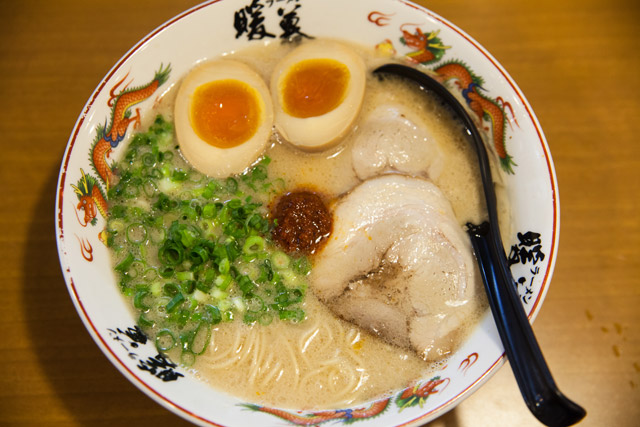
Tonkotsu ramen is one of the most famous foods of Fukuoka city, the pride and joy of its residents, and how could it not be? They have mastered this recipe to the point that several of its ramen shops have turn into international chains, taking this delicious meal far beyond the borders of Japan. For lovers of thick and flavourful ramen broths, this is a dish that must be tried while in the city; not once or twice, but several times in order to get a good taste of the different variations available.
① Ippudo Ramen
Founded in 1985 in Fukuoka’s Daimyo district, Ippudo is one of the two top ramen chains in town. This shop became famous for its Shiromaru Motoaji ramen which is cooked for over 18 hours to give its broth a rich and deep flavour. It also offers other boldier dishes like the Akamaru ramen (homemade flavoured oil and spices) while keeping tradition as its base. Ippudo is constantly innovating and expanding within Japan and abroad, and it can now be found in 12 countries around the world including locations in America, Europe and other parts of Asia. If you are a fan of the chain, then make the experience extra special by visiting Ippudo Daimyo, its original store. A new concept has also been launched in Fukuoka, Ippudo Stand. Besides the standard menu, here you can try a selection of Fukuoka and Kyushu’s best nihonshu (Japanese sake) at 500 yen per cup.
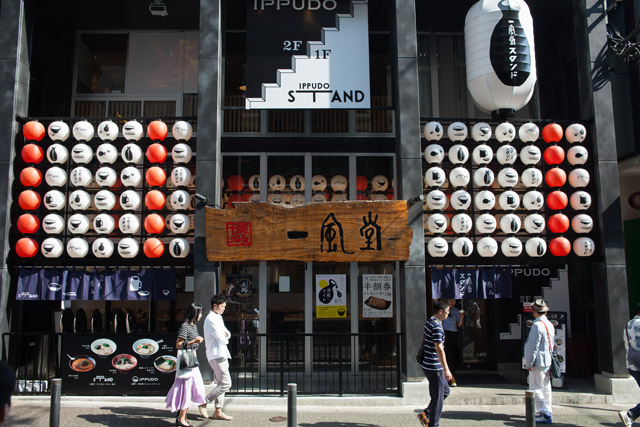
Ippudo Ramen

Shiromaru Classic

② Hakata Daruma
Hakata Daruma is one of the most famous old ramen shops in Hakata. They started their business in 1963 and have been popular among local people for a long time but are now becoming more and more popular throughout the country. Hakata Daruma only uses select pork, seafood, and other ingredients, which are certified as being of a high quality. They spend a lot of time and effort in cooking their ingredients, so it’s no wonder how delicious their ramen is! Their tonkotsu soup is very rich and has a strong flavor, with melting chashu (pork slices) and plenty of scallions. If you want to try the hardcore Hakata ramen, this is the place to go!
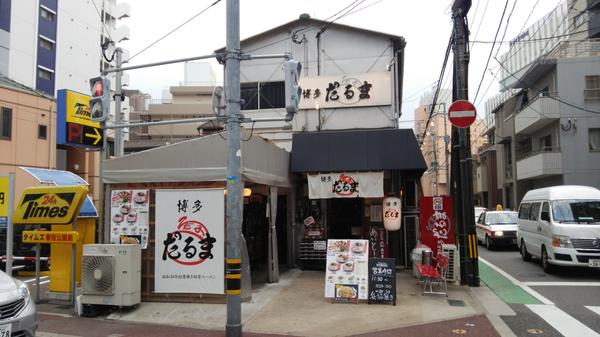
Hakata Daruma

2-16-19 Haruyoshi, Chuo-ku, Fukuoka-shi, Fukuoka Prefecture, Japan, 810-0003

③ Ichiran Ramen
If you ask the locals in Fukuoka which one is their favourite ramen shop, many will be divided between the big two, Ichiran and Ippudo. Ichiran is actually the older of the two chains, being founded in the 60s, and as such claims the title of being the birthplace of several ramen-related intricacies; the first to place spicy red sauce in the centre of its ramen, the first to offer an aromatic tonkotsu soup, the first to offer flavour concentration booths, and the first with a customizable ordering system. Whichever is your favorite, Ichiran and its Nakasu location are without a doubt a must for ramen lovers in Fukuoka.

Ichiran Ramen
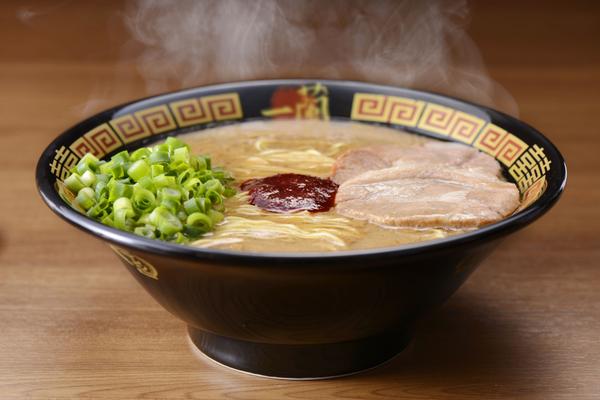
④Unari Ramen
In the land of Ichiran and Ippudo, the two big ramen chains in town, Unari Ramen is a unique proposition both because of the shop size and the ramen on its menu. Located in Nakasu Island, Unari has been increasing its local fan base thanks to its tonkotsu (pork) and seafood broth combination, something of a rarity in the land of pure tonkotsu broth. Technically speaking, it is not the city’s traditional recipe but this particular combination is deeper in flavour and as such, can be more pleasing than the original. Open from 6pm to 6am from Monday to Saturday, and closed on Sunday, Unari is also a great option after a late night out in the town.
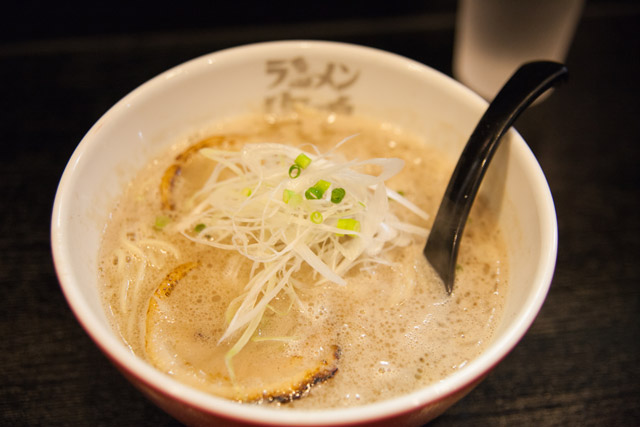
Unari Ramen

The BREAKFAST HOTEL Fukuoka Nakasu
3-6-19, Nakasu Fukuoka
⑤Danbo Ramen
Danbo is a growing ramen chain based in the outskirts of Fukuoka City. As with the bigger chains, it specializes in classic tonkotsu ramen but also offers a wider menu including miso ramen and negi-goma ramen (topped with green onions and sesame). It’s claim to fame is being awarded top spot by a Kyushu TV poll a few years back. It’s small size also means a more familiar service. Danbo has a location a short walk away from Dazaifu Station and is a perfect complement to a trip to Tenmangu Shrine.

Danbo Ramen

⑥ Hide-chan Ramen
Hide-chan Ramen was established by the son of Hakata Daruma’s owner, so you can imagine that it has an unquestionably great taste! Their ramen has a rich taste but doesn’t have a strong tonkotsu smell. You will love it once you start sipping their soup and will never be able to stop sipping! At Hide-chan Ramen, you can choose the thickness of your noodles from super thick, middle thick, and super thin. Also, you can add chashu and scallions as your toppings. Very simple, but enough to be absolute Hakata. Their ramen is popular among Japanese celebrities too and you will see many autographs of famous people inside the shop!

Hide-chan Ramen

⑦ Hakata Ramen ShinShin Tenjin branch
You might have to wait in line to eat this ramen, as the shop is always crowded during lunchtime. But you won’t wait too long, as people leave quickly…so don’t give up! Their tonkotsu ramen, with soft chashu that melts in your mouth, is delicious. The chashu has been soaked in their original sauce for a long time and you can taste it right after you put it in your mouth. Besides their tonkotsu ramen, you can try champon noodles (thick noodles with various toppings and soup), and sara udon (udon noodles on a plate without soup), both of which originated in Nagasaki prefecture. They also make a fried rice with chashu that’s pretty popular.
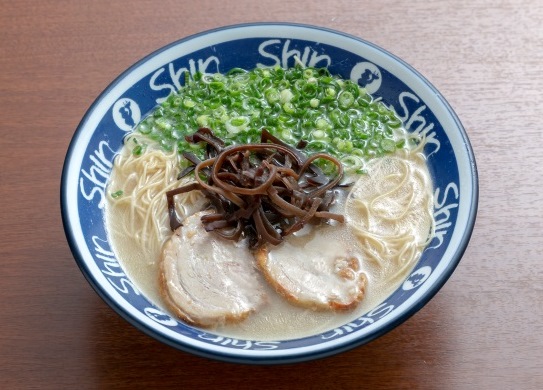
Hakata Ramen ShinShin

Quintessa Hotel Fukuoka Tenjin Comic and Books
3-2-10 Fukuoka
If you are interested in eating ramen in Hakata but are not such a big fan of tonkotsu, this is the place for you! Genei offers a shoyu (soy sauce) flavored ramen. It is popular even among Hakata’s local people who usually love tonkotsu ramen. They do have tonkotsu ramen but their number one menu item is shrimp shoyu ramen. They use Japanese dashi (fish broth) and special soy sauce with shrimp oil. This soup has a full flavor. You can add chashu, finely stripped leeks, dried shrimp, and Japanese parsley. The inside of the shop is stylish and great for lunch on your date too!
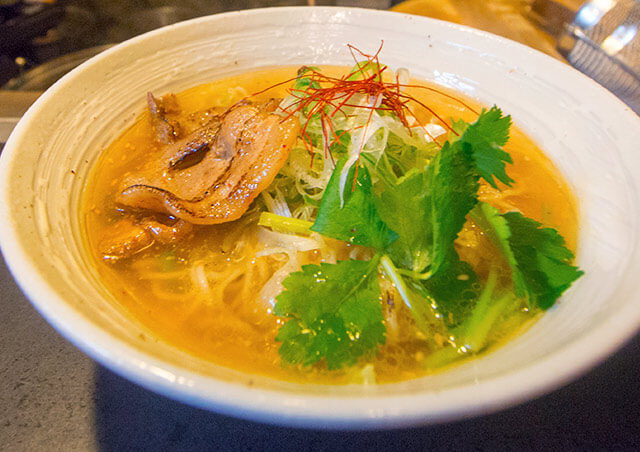
Komugi is a stylish ramen shop that looks like a cozy café. It’s relatively new but already has lots of fans! Their most popular menu items are: Toriboni (Chinese noodles with a combination of chicken broth and dried fish broth), Mazesoba (noodles with various toppings but without soup), Gomtang (tahini flavored soup with a pinch of Sichuan pepper). These favorites have been enticing people back to Komugi once they try their first taste! The most popular item on the menu, Toriboni is light and slightly sweet. Their handmade, thin noodles and the way they put chashu on top is also the reason why it’s so popular. This place is perfect for those who follow current trends too!

KOMUGI Ramen
⑩ Ramen HAYAKAWA
Ramen Hayakawa is a ramen shop with non-tonkotsu ramen! So you can visit when you want to try something different. Their specialty is chicken broth with shoyu (soy sauce) flavor. They use strictly selected chicken, including Hakata local chicken to make their broth. You can smell their distinctive soup as soon as it is placed in front of you. The soup is clear and beautiful. You might think it has a light taste but it’s actually quite rich. You will experience the taste of umami with this soup. The pork and chicken chashu on top melt in your mouth and they match perfectly with the shoyu soup!
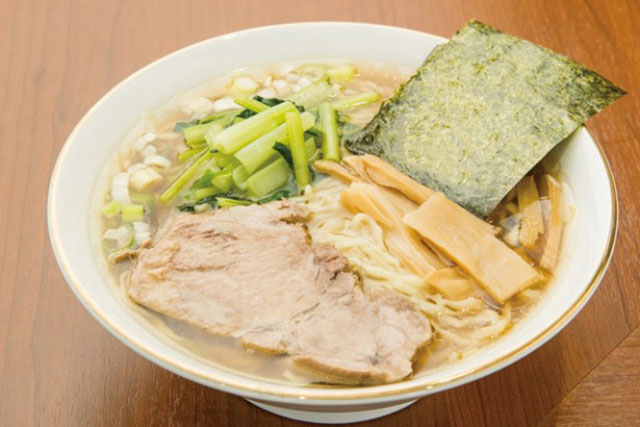
Ramen HAYAKAWA
⑪ Ramen Stadium
If you can’t decide which ramen you want, you should visit Ramen Stadium! Ramen Stadium was established in 2001 and has hosted over 87 ramen shops to date. They host eight different ramen shops from all over Japan at the same time. These shops are all famous and popular, so you can enjoy many trendy ramen dishes all in the one place! They rotate shops, which allows you to enjoy going there over and over again to taste different ramen! It’s on the 5th floor of the Canal City shopping center, which is only a 10-minute walk from Nakasu-Kawabata Station.

Ramen Stadium
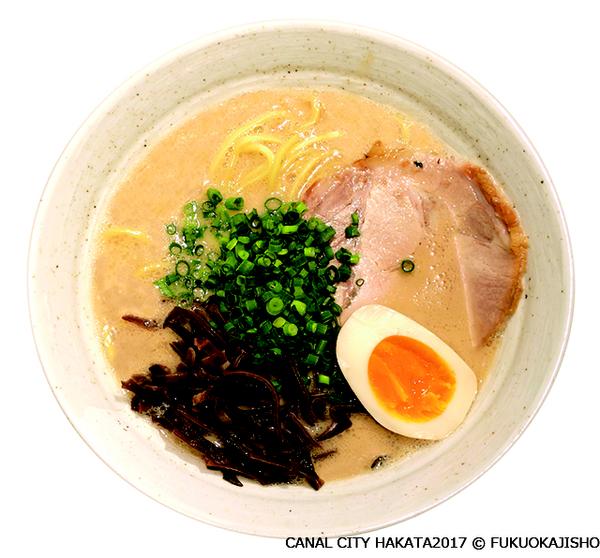
Click here for a summary article including this article
プライバシーポリシー ・ 利用規約 に同意の上、ボタンを押してください。
ログイン(無料)すると より便利に利用できます
Change password
Niigata's Murakami City: Enjoy Fun Events, Sightseeing, and Local Cuisine!
We use cookies to improve our contents. Check the detail and update your settings here .
We use cookies to improve our services.
For more details, please click here .

- Change setting
- Food & Drink
- Accommodation
- Things To Do
- All the categories
Transportation
- Weather & Seasons
- Long-Term Stay
- Travel Tips
- Event Tickets
- About MATCHA
- Company Profile
- Things To Do in Fukuoka
- Food & Drink in Fukuoka
- MATCHA Special Features
Hakata Ramen - How To and Where To Eat In Fukuoka

Hakata ramen is a local variety of Japanese ramen that originates from Fukuoka in southern Japan. Learn how to order and eat it, recommended restaurants, and the unique characteristics of Hakata ramen, with its tonkotsu pork bone broth and thin noodles.
Hiromasa Uematsu
Hakata Ramen: Must-Try Japanese Tonkotsu Noodles
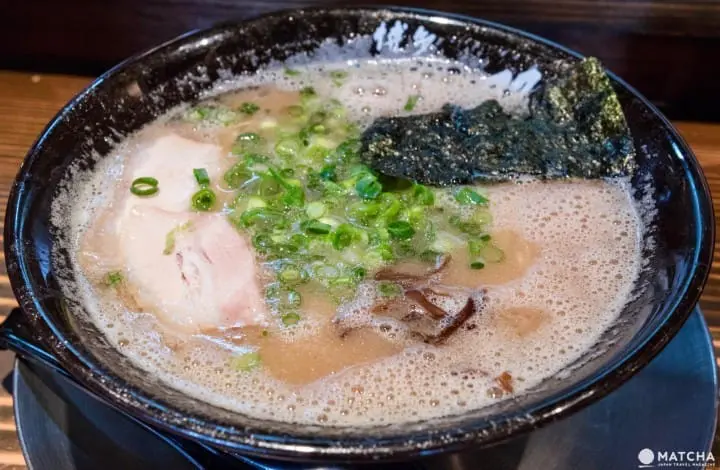
Ramen has become the representative food of Japan. Although it can be found outside of Japan, too, visitors are highly recommended to try this soul food when they are in Japan. In particular, local ramen varieties exist in areas all over Japan, making it worth to try these delicious dishes here.
One special variety to try in Japan is Hakata ramen , or tonkotsu ramen. The well-known restaurant Ichiran actually offers Hakata ramen, which is a regional specialty that now enjoys popularity overseas. However, trying it in-person and in Japan will provide the best experience.
This article will introduce what makes Hakata ramen unique, how to order it like a local, and recommended restaurants where Hakata ramen was first made.

About Hakata Ramen
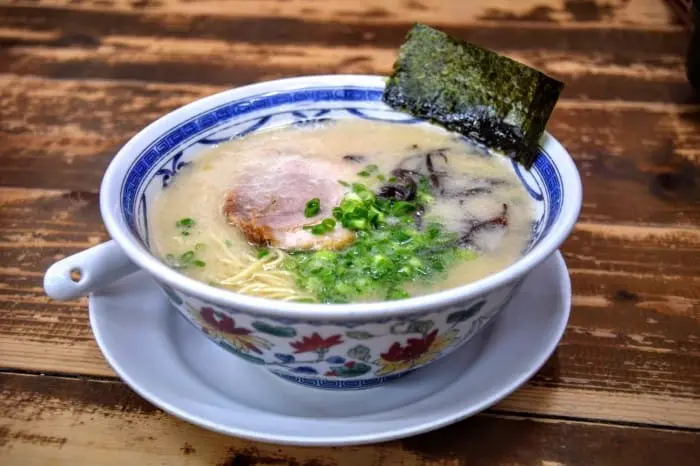
A typical bowl of Hakata ramen is garnished with minimal toppings: just green onions and char siu (boiled or roasted pork). While the price may vary by restaurant, generally you can have a bowl for between 500 to 700 yen.
"Hakata" is the name of a business district in Fukuoka City, Fukuoka Prefecture . While it was named after its place of origin, now Hakata ramen shops are all over Japan.

Many ramen shops also offer additional toppings such as extra char siu or a boiled egg for an additional 100 or 200 yen.
The Characteristics of Hakata Ramen
Hakata ramen differs from other ramen varieties in several ways.
1. A Cloudy Soup Broth, Tonkotsu - Made From Pork Bones
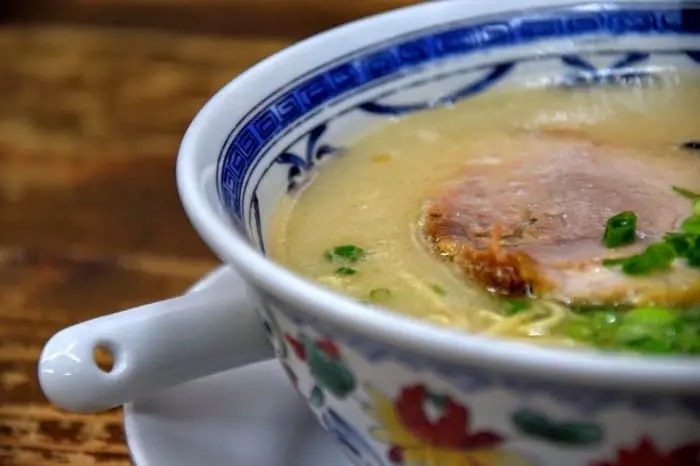
Whether it is made by boiling down chicken bones or seafood, flavored with soy sauce, or some other method, the way ramen soup is prepared varies from shop to shop.
In the case of Hakata ramen, pork bones are carefully boiled until the soup reaches a cloudy white color. The characteristic result is a smooth taste that is almost like milk, while also allowing for the flavors of the pork and soy sauce to really come through.
2. The Noodles Are Thin And You Can Choose Their Firmness
The noodles in Hakata ramen are known for being thinner than regular noodles . This was devised for the benefit of busy market vendors, so they could quickly cook noodles to completion.
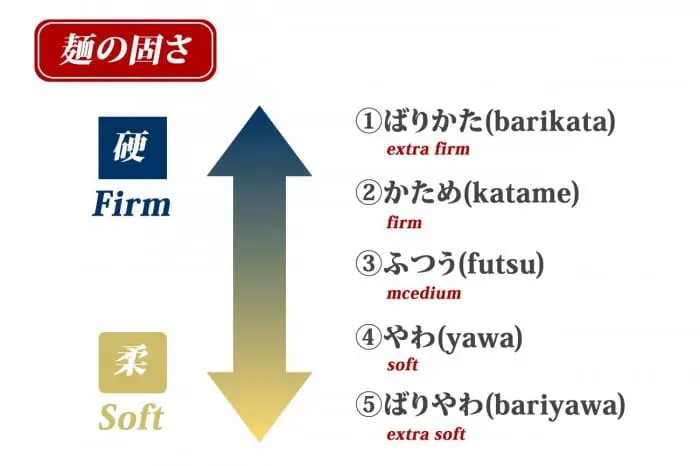
Since the noodles are thin, it is easy to get them cooked to your preferred level of firmness, and you can choose when you order. The levels and their names vary from shop to shop, but many places divide them up as seen above: barikata (extra firm), kata (firm), futsu (medium), yawa (soft) and bariyawa (extra soft).
Whether you prefer chewy noodles or something a bit softer, you can choose the level that is right for you.
Choose the firmness when you order from the menu. Next time you get regular ramen, try asking for barikata .
3. The Unique "Kaedama" System
Since the noodles are thin and they absorb liquid quickly, they can become too soft.
Most Hakata ramen shops do not have the option to supersize noodle portions since they could become mushy during the extra time needed to eat them. Instead, they have a "kaedama" system, where you can receive extra noodles after your initial order.
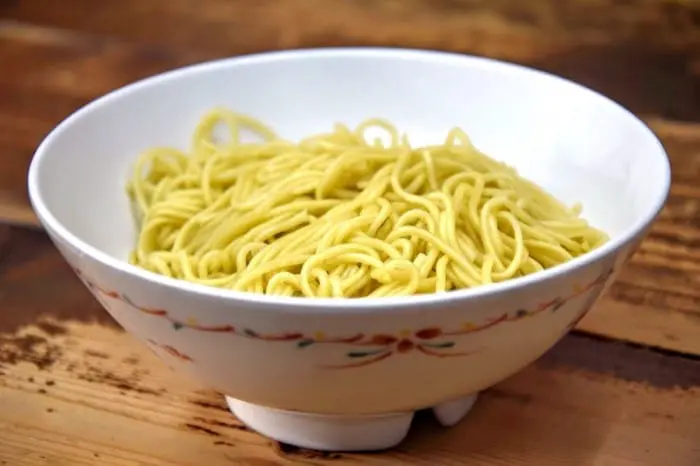
When you want more noodles, tell the staff " kaedama wo onegaishimasu " ("Please give me a second serving."). As shown here, the kaedama (second serving) will be given to you in a separate container.
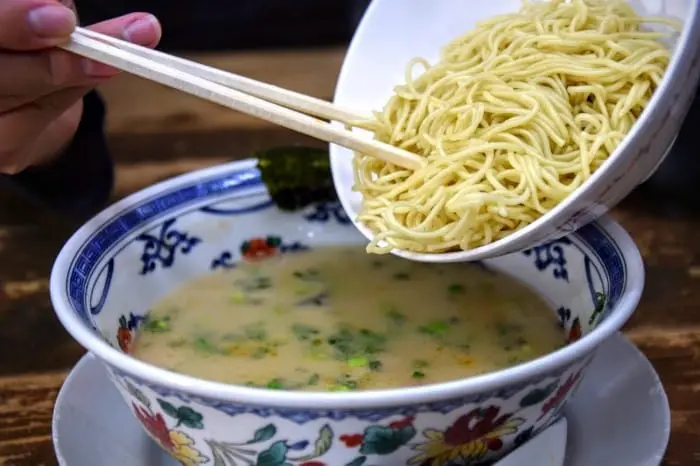
Put them in the soup! If you're willing to pay, you can order as many kaedama as you want.

Most shops will have a bottle of ramen tare ("ramen seasoning") on the table. Adding a second serving of noodles will make the soup a little watery, so adjust the taste with a few squeezes from this bottle.
4. Original Toppings
Ramen restaurants usually have free toppings on the table. Hakata ramen shops also have their own unique toppings available.
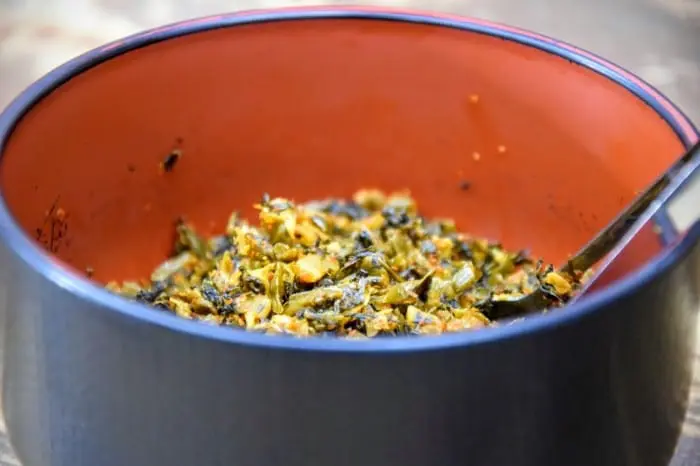
This is karashi takana . It consists of pickled leaf mustard greens, with red peppers added for some kick, diced up and fried in oil. The oil's depth and the heat of the peppers give the soup a more stimulating taste.
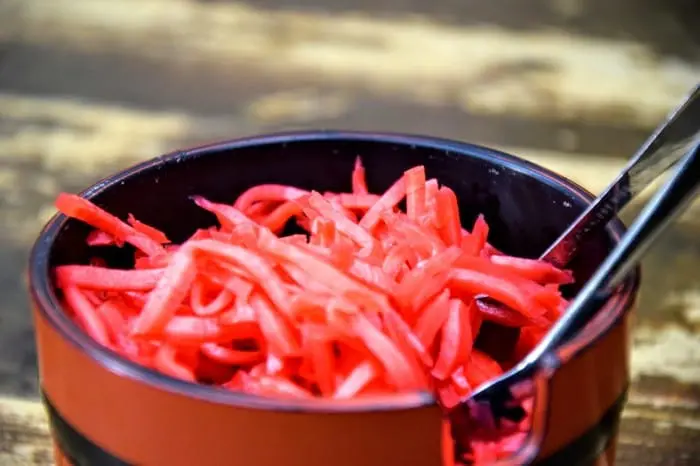
This is beni shoga , pickled ginger root, and it packs a characteristic acidity and mouth-numbing spiciness. Beni shōga adds some zing to the mild-tasting soup of Hakata ramen.

Try to find your favorite topping!
Some shops have garlic and bean sprouts available as free toppings, as well.
4 Recommended Restaurants with Delicious Hakata Ramen
Below are four restaurants in Fukuoka, Tokyo, and other locations in Japan where you can enjoy a bowl of authentic, carefully-prepared Hakata ramen. Make sure to experience this must-try dish for yourself.
1. Hakata Ikkousha

Picture from Top 8 Must-Try Ramen In Fukuoka, Kyushu - Recommended By An Expert Hakata Ikkousha is a well-reputed ramen restaurant chain with multiple restaurants in Japan, like Fukuoka, Tokyo, and Hokkaido, and international locations as well. Try the tonkotsu ramen , which is packed with flavor and delicious ingredients.

Hakata Ikkosha Main Store
2. Nagahama Number One
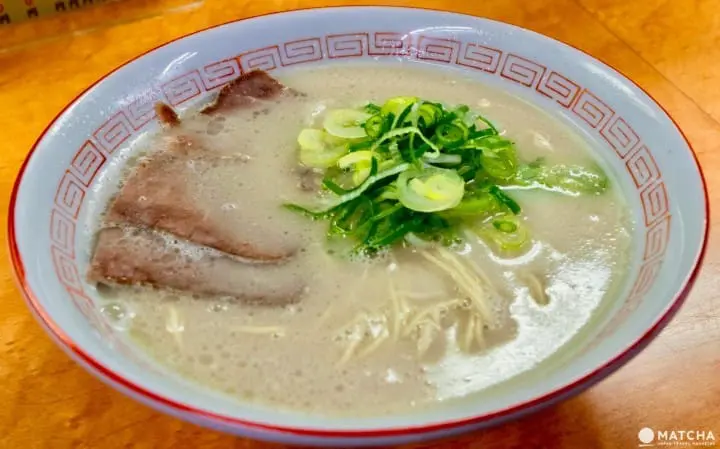
Picture from Top 8 Must-Try Ramen In Fukuoka, Kyushu - Recommended By An Expert Nagahama Number One is a ramen shop with a long history in Hakata, Fukuoka. This shop has branches in the greater Fukuoka Prefecture area and also Tokyo.
What sets this restaurant apart is its unique tonkotsu broth , which is creamy with a thick consistency. However, the soup does not get too heavy and it is easy to eat. The restaurant is also known for having reasonable prices --the most you will spend here is about 1,000 yen, even with extra toppings.

Nagahama number one Gion store
3. KENZO cafe

Picture from Top 8 Must-Try Ramen In Fukuoka, Kyushu - Recommended By An Expert KENZO cafe is a food stall-turned-restaurant that still retains its friendly, casual atmosphere, located in the middle of Fukuoka City. You will feel welcome and at ease with the classic Japanese interior.

Hakata stand KENZO cafe
4. Tanaka Shoten
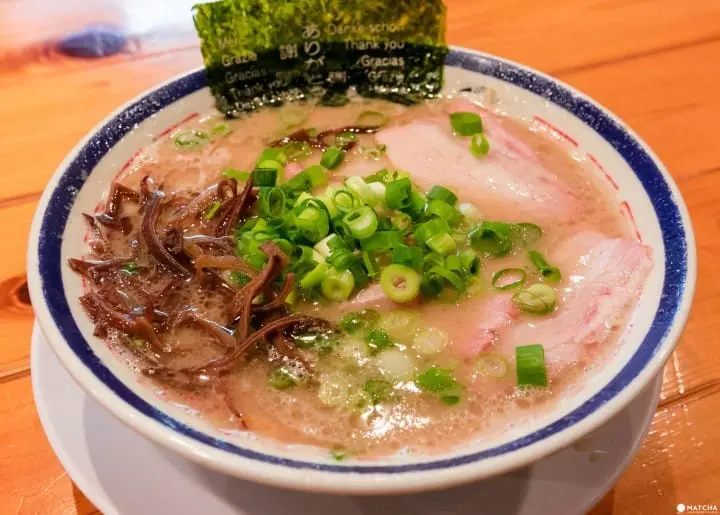
Picture from 30 Great Tokyo Ramen Shops Selected By A Ramen Expert Tanaka Shoten is a ramen shop in Adachi Ward in Tokyo. There is just one choice on the menu--tonkotsu ramen known for its very rich taste in comparison to what you can have at other restaurants. It is a unique take on Hakata ramen that is very popular.
The noodles are also very satisfying and thin, as they are ordered from Fukuoka.

Hakata Nagahama Ramen Tanaka Shoten Main Store
Savor Hakata Ramen in Japan
Hakata ramen is a classic ramen variety that is a must-try in Japan. The quirks like choosing your own firmness level and the kaedama system might be a bit difficult to understand at first, but this is part of what makes Hakata ramen so delicious and unique.

9 Convenient Japanese Phrases To Use At A Ramen Restaurant
MATCHAで編集やってます植松です。87世代。
Related topics
Top articles.

Fukuoka's Famous Shrine, Dazaifu Tenmangu - A Complete Guide

How to Get to Hakata Station From Fukuoka Airport

Fukuoka: 30 Things to Do, Festivals, Hotels, and Travel Tips for 2024

Related Article

Yakitori Grilled Chicken: A Guide to Restaurants and Yakitori Types
Food & Drink

20 Must-Try Ramen Shops Near Tokyo Station And Nihonbashi - Chosen By An Expert
Tokyo / Marunouchi

15 Best Ramen Shops In Asakusa And Tokyo Skytree - Chosen By An Expert!

Top 8 Must-Try Ramen In Fukuoka, Kyushu - Recommended By An Expert

Kyoto Ramen Koji: Try Ramen From All Across Japan In One Restaurant!

3 Super Popular Ramen Joints In Ikebukuro Worth Lining Up For
Start planning your trip
Special Features

Popular Searches
Latest news.

Showa Kinen Park Flower Festival 2024: Enjoy Nemophila, Tulips, and More!

A Must for Nature Lovers! Win a Free Stay at Unzen Amakusa National Park

A World of Light and Color! Van Gogh Alive in Japan 2024

Cherry Blossom Light-up in Tokyo! Yomiuri Land's Jewellumination

Cherry Blossoms and Sky Lanterns! Aichi Hanami Lights 2024

Japan's Public Holidays and Long Weekends in 2024

Aeon Mall Okinawa Rycom: A Shopping Mall Featuring a Resort Aura

Suica and Pasmo IC Cards: Prepaid Transportation Passes in Japan

Riding Taxis in Japan: The 6 Best Apps to Grab a Cab

How to Travel to Kyoto From Osaka: The Fastest and Cheapest Ways
New articles.

Sushi and Primitive Grill Kanazawa "Nakamura"

Let's go see the castle in the sky, Takeda Castle Ruins! How to get to Asago City, Hyogo Prefecture

[2024 Latest] Must-see spots when you come to Osaka! "Kaiyukan", "Tempozan Ferris Wheel", "Tempozan Marketplace" - A summary of Tempozan tourist information

Kanazawa Omicho Seafood Bowl Tsuruya

[2024 Latest] Let's go to Nara, a city of history and culture, by Kintetsu Railway! Access guide from Osaka and Kyoto
Discover Japan & Save

Our Guide: Hakata
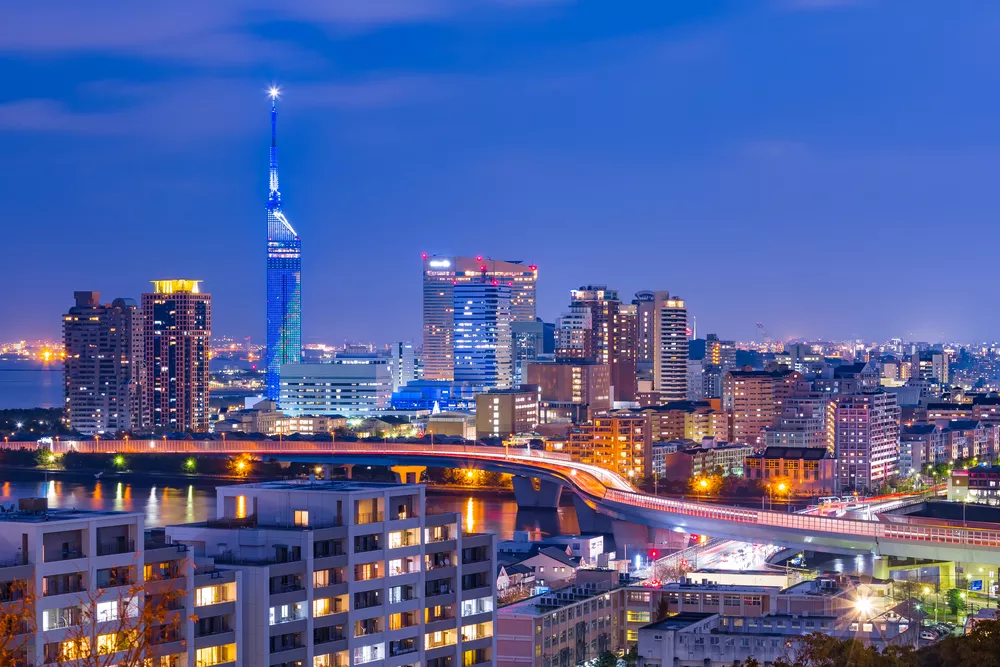
Hakata is an old Japanese city located in Fukuoka Prefecture. It is best known for its ramen (Hakata ramen) and festivals (Hakata Gion Yamakasa, Hakata Dontaku Minato Matsuri, and Hakata O-kunchi).
How to get there
I flew in to Japan via the Kansai Airport, so I took the Limited Express Haruka train from the airport to Shin-Osaka station and then the Shinkansen from Shin-Osaka to Hakata Station. The entire trip was covered by my Japan Rail Pass and took about four hours.
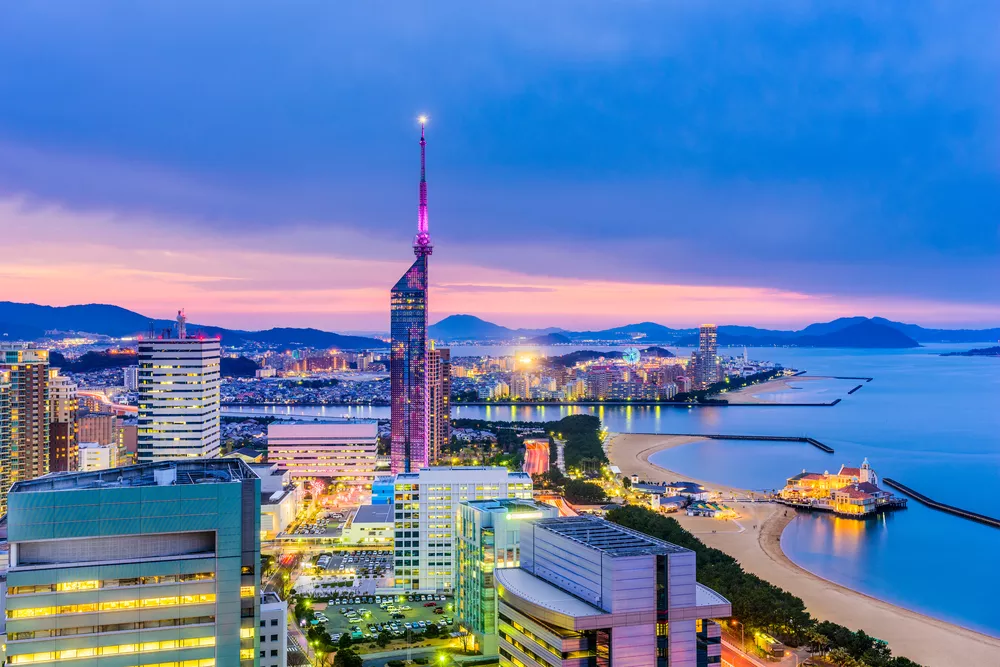
How to get around
Getting around Hakata is quite easy as it has many buses and subway lines. Walking is also a fantastic and healthy option as many of the city’s attractions are situated not too far from each other.
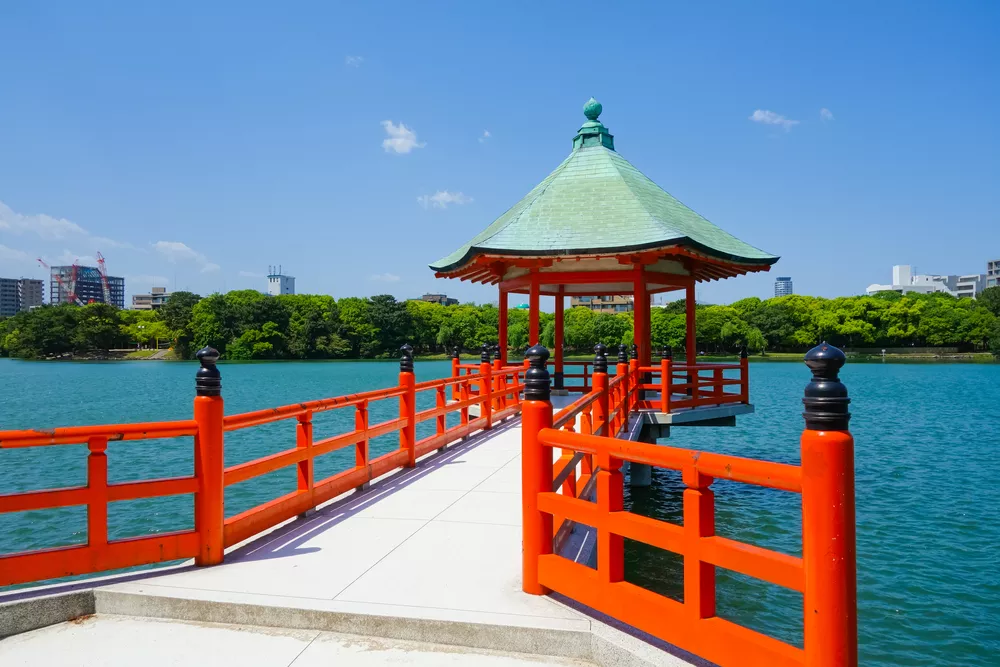
What to see
From the hostel I stayed at, it only took 10 minutes to walk to Canal City, a huge, open-air, multi-storey dining, entertainment, and shopping complex in the heart of Hakata. I spent at least a couple of hours checking out the more than two hundred restaurants, cinemas, shops, and cafes in the building. What I really loved the most about it was the Ramen Stadium on its topmost floor — a staggering array of different kinds of ramen and other Japanese food — I decided then and there that I’d have to come back at least once more before I left Hakata!
Fukuoka Castle Ruins
To go to the Fukuoka Castle Ruins, I got on a Kuko Line subway train and got off at Ohorikoen Station. From there, it took 10 minutes to walk to the ruins found in Maizuru Park.
I was welcomed to the remnants of a number of guard towers and gates, and what seemed to be a moat. I also noticed how the garden’s walking paths were lined with cherry trees and thought I should have gone there in spring instead of winter to experience the beauty of the blossoms.
Hakata is also known for its open-air food stalls, known as Yatai. These food stands can accommodate between six and ten people at a time, and they specialise in different local dishes, such as oden (hot pot), yakitori (grilled chicken skewers) and, of course, ramen.
I went there one evening at around seven and saw all the stands were already full, with dozens of people, both local and foreign tourists, patiently waiting in line to be served. It was such a fun and lively atmosphere!
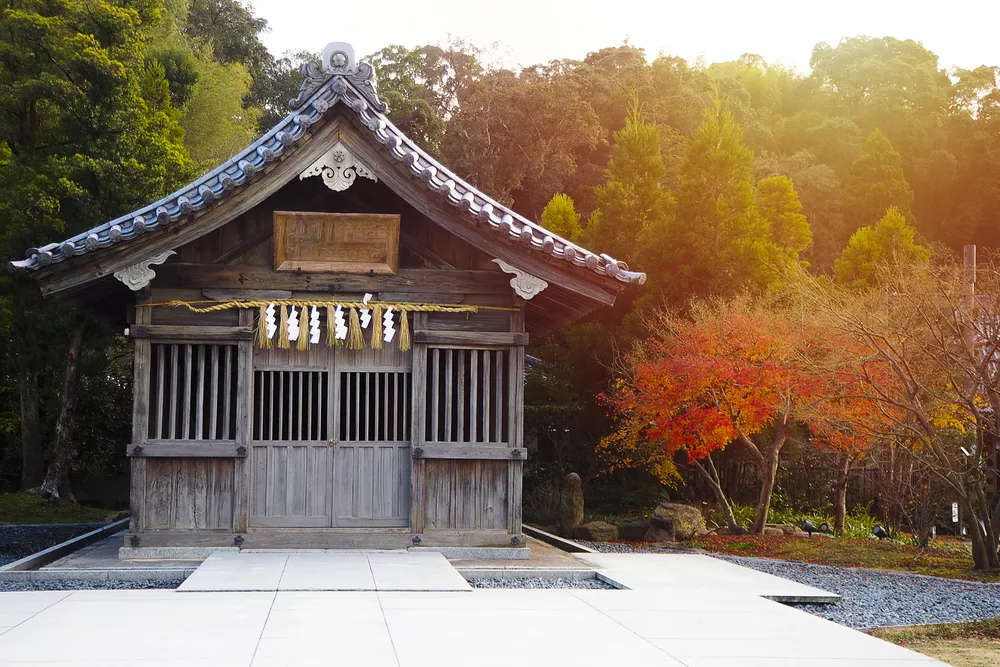
Share This Story, Choose Your Platform!
Related posts.
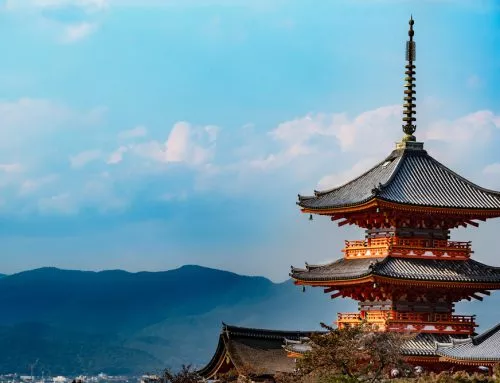
Why Kyoto Is Best Explored By Bike
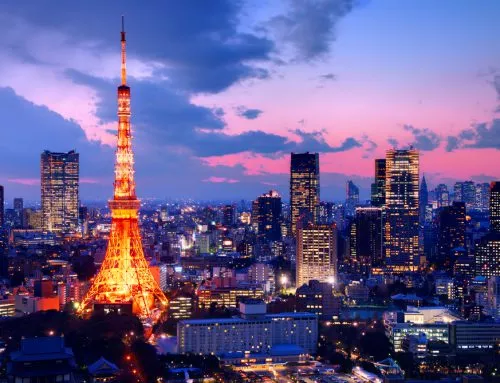
The Best Hotels in Tokyo 2019
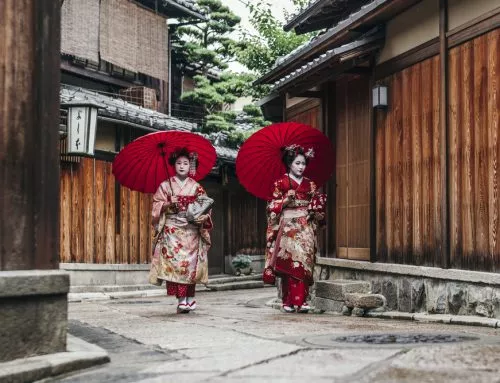
Things You Shouldn’t Do In Japan
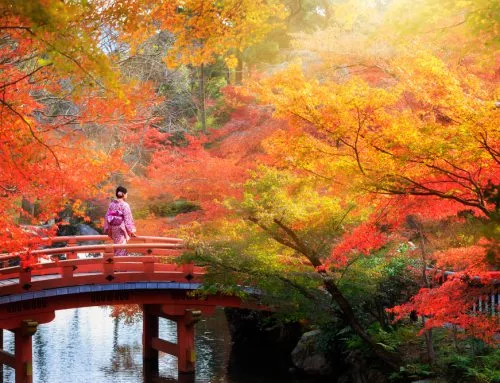
Why Japan Is A Great Country To Travel Solo
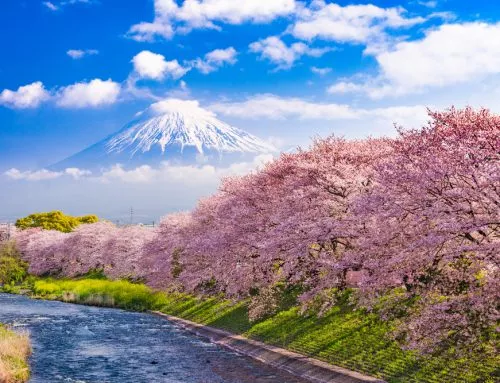
The Ultimate Japan Travel Bucket List

"The whole trip was simply amazing. I hadn’t done a lot of research before my trip and with the flexibility of the pass it allowed me to change things as I went. It was safe, reliable and great value for money”.
THURSDAY SPECIAL OFFER: ✓ FREE SHIPPING ✓ FREE DIGITAL TRAVEL GUIDE
Get your FREE 249 Page Japan Travel Guide (Valued At $9.99)
Limited Time Offer! Ensure you get the most out of your trip to the land of the rising sun with your FREE comprehensive Japan Travel Guide.


Inside Akihabara: A Travel Guide to Japan’s Electric Town
A kihabara, Japan, is famous for its streets filled with colorful animation ads and bustling shopping centers, hence its nickname Electric Town. The district near central Tokyo is a welcoming destination for lovers of anime and games. As an epicenter for Japanese anime and cafe culture, it is full of bright lights, spacious streets, and welcoming shops and people . Akihabara is the second most popular city for tourists and is known as Akiba for short.
The pop culture paradise is ideal for those who want to celebrate Otaku culture, which generally refers to anime and manga fans. Characters from classic video games and animated series are featured in comics, collectibles, merch, and other specialized offerings. For travelers who want to indulge in a unique trip with plenty to do in the area and a special focus on anime and Japanese culture, Akihabara is perfect.
Things To Do in Akihabara
There are many attractions that have specialized games and activities in Akihabara. The shopping hub appeals to many subcultures, so it is well-loved by gamers, anime aficionados, and self-proclaimed geeks.
See the Electronic Stores
On the main Chuo Dori street there are hundreds of electronic shops. Some offer the latest computers, cell phones, cameras, televisions, and appliances available. Special technologies are also available at the stores in Akihabara, so collectors will find it to be a paradise. With both smaller and independently owned shops and chain stores, there are plenty of options for tourists to choose from and peruse. Some of the most popular chain stores are Laox and Sofmap.
Tourists should consider that some of the electronics available in Japanese stores are not intended for use outside of their country of origin.
Visit a Cafe
Cosplay cafes are great attractions to visit while in Akihabara since they are popular with tourists. Cosplay cafes are places where the waitresses dress up like popular anime characters and cater to guests with live performances, food, and of course, coffee. Guests who appreciate cosplay and animation-inspired experiences will love the cosplay cafes. One of the best cosplay cafes in the area is the Home Cafe , which caters to guests as if they have just returned home.
Explore a Historic Sight
Kanda Myojin (also known as Kanda Shrine) is a beautiful historic sight. The shrine dates back to the year 730 and has been restored many times. There are nine other shrines on the property and the estate is spacious. Kanda Myojin is dedicated to two deities, Daikokuten and Ebisu, which both contribute to the good fortune of others. Many visitors visit the shrine to pay respects to the deities and pray for prosperity. The site has free admission and is open year-round, so it attracts many tourists.
Experience Mario Kart
Travelers can live out their Nintendo dreams and drive around Akihabara in go-karts. Along with a tour guide who knows the local area, tourists can have an exhilarating experience that they will never forget. Travelers who book this excursion can drive around the public roads to explore the vibrant area and even wear a cosplay costume and take photos. The race lasts about two hours, but travelers should be sure to acquire an international license before getting on the roads.
Transportation in Akihabara
Getting to akihabara.
The best way to get to Akihabara is the station, which is north of Tokyo. The Akihabara station is a busy and sometimes confusing place. Technically, there are three Akihabara stations with different exits. The JR Akihabara (East Japan Railway Company), Tokyo Metro Akihabara Station (Hibiya Line), and Tsukuba Express Akihabara Station. The JR Akihabara Station is best for travelers coming from Tokyo, Shibuya, or Shinjuku. For those traveling from Roppongi, Ginza, or Tsukiji, the Tokyo Metro Akihabara Station is best. The Tsukuba Express Akihabara Station is the right choice for those coming from Asakusa and Tsukuba. These areas have direct lines and stations to Akihabara, so it may be best for travelers to stay close to those areas.
Of course, a traveler’s departure location determines the station they should be coming from, but from each Akihabara station, it is quite simple to get to central Akihabara. To get to Electric Town, travelers should use the Akihabara Electric Town gate on the first floor of the station. From there, as travelers exit the station they will see the Sega building and the Main Street of the Electric Town. From the Yamanote and Sobu line platforms, which are located on the second and third floors of the station, travelers simply need to go to the first floor.
It is recommended that travelers use the JR Pass or Tokyo Subway Ticket so that navigating the trains, metro, and subway is more affordable and convenient.
Getting Around Akihabara
As is common in Japan, most people walk to where they need to go. The main attractions are within walking distance of each other, so going on foot is the easiest way to get around. If that does not sound ideal, travelers can try alternatives. Japan has regular and rapid trains that go between the different wards. Travelers can acquire a one-day ticket that grants unlimited rides, which costs around 760 yen ($5). For car rides, taxis are more commonly used as they are more affordable in Japan, so that may be an adjustment for some travelers who are used to rideshare apps. Transportation throughout Japan, and specifically Akihabara, is not very hard to do even though there may be many people in the area.
Best Times To Visit Akihabara
Since Akihabara is located relatively close to Tokyo (around 25 minutes via car and an hour via train), the best time to visit coincides with the best time to visit Tokyo. The weather is the best from March to May or September to November. This area of Japan is cooler around these times with spring just beginning to blossom and autumn muting the summer sun. Sightseeing is much more comfortable with the mild temperatures. Travelers who want to enjoy the local festivals, events, and both indoor and outdoor activities can enjoy Akihabara the most during these seasons. Although weather is a reasonable consideration for travel, Akihabara is a good place to visit despite the season.
On Sundays, the main street of Akihabara (named Chuo Dori) is closed to cars so traffic ceases. Therefore, a pedestrian heaven (or hokosha tengōku) is created and travelers can freely walk around. Nighttime is also one of the best times to explore Akihabara since the electric lights along the streets and buildings light up the night sky and entice all who explore it.
Best Hotels
Nohga hotel akihabara tokyo .
This four-star accommodation has a restaurant, air conditioning, free wifi, a bar, 24-hour front desk assistance, and continental breakfast each morning. The Nohga Hotel is only around 13 miles from the Tokyo Haneda Airport and offers personalized insight into how travelers can best spend their time while in Akihabara. The accommodation prides itself on providing a culturally rich experience for each guest, which it proves in its music, arts, and culinary experiences.
Hotel Resol Akihabara
This modern hotel provides comfort and convenience to its guests. Since it is only a three-minute walking distance from the JR Akihabara Station, it is centrally located. The hotel boasts a New York decorative style and is located only 25 minutes (by car) from the Haneda Airport. The guest rooms even have refrigerators and WiFi, which is ideal for long-distance travelers. There is a convenience store within a short distance and an Italian restaurant within the accommodation, so travelers will have everything they may need during their stay in Japan .
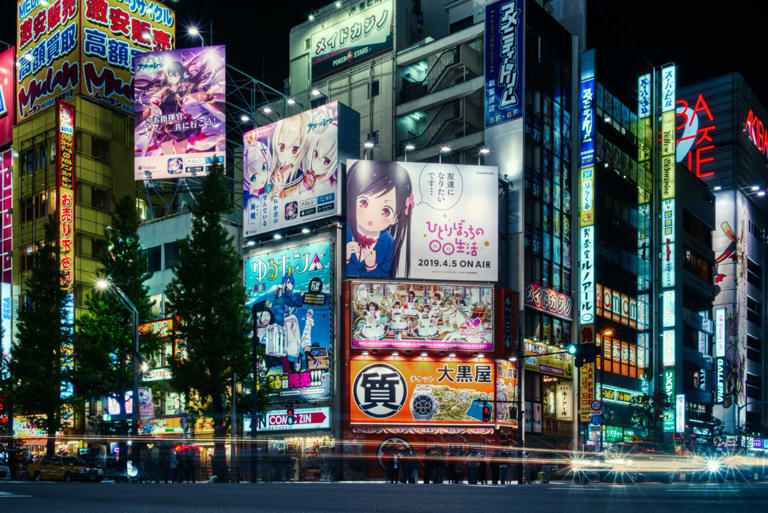
Hakata Gion Yamakasa Festival
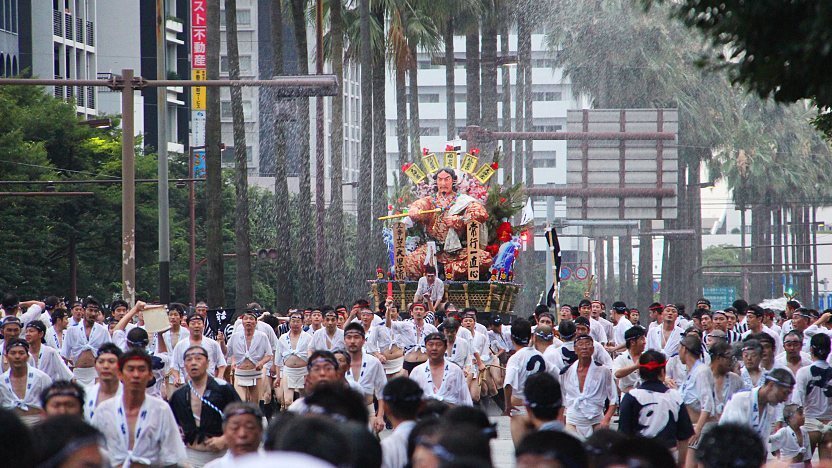
The Hakata Gion Yamakasa (�����_���R�}) is one of the most interesting festivals in Japan. It is held every year during the first half of July and climaxes with a spectacular time trial race in the early morning hours of July 15. In the race, seven neighborhoods of Fukuoka 's Hakata district compete in pushing beautifully decorated festival floats along a five kilometer long course through the city.
The festival features two different types of floats:
The larger kazariyama floats stand over ten meters tall and weigh over two tons. In the past they used to be raced through the streets, however, with the introduction of power lines in the Meiji Period (1868-1912), this became problematic, and today they only serve as decorative floats. 14 of them stand spread out across the city from July 1 to 14, including two at Hakata Station and Canal City Hakata .
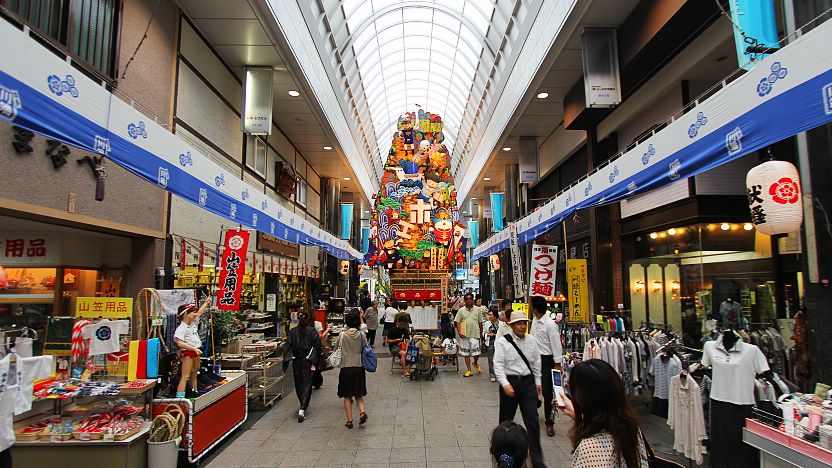
For the race, smaller-sized kakiyama floats - about five meters tall and one ton heavy - are used today. There are seven of them, one for each of the neighborhoods participating in the race. The floats do not have wheels and are dragged through the streets, while water is spread in front of the float in order to reduce friction between the float and the road surface (and to cool down the participants).
From July 10 to 14, the seven teams hold several practice runs and parades in preparation for the main race. A good English booklet is available with detailed maps and time schedules for these events which are interesting to watch. On July 15 just after 1am, all teams line up behind the start line, which is located in front of Kushida Shrine, the festival's host shrine .
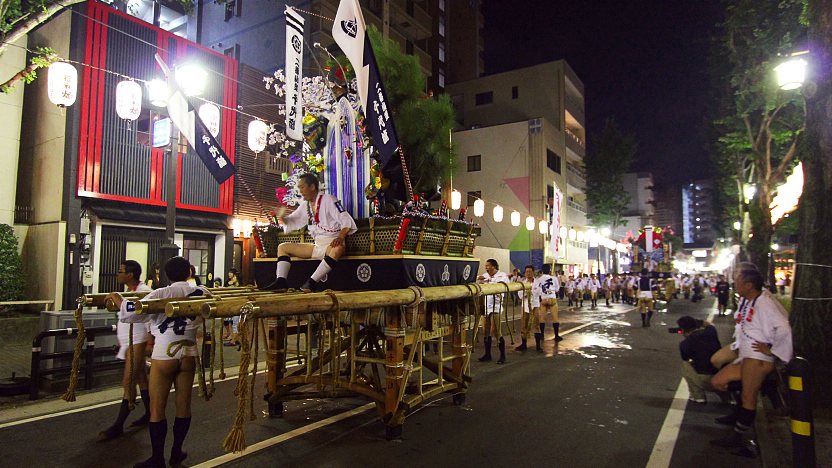
On July 15 at 4:59am , just before sunrise, the first team starts into the race, followed by the other teams in five minute intervals. Despite the early time of the day, thousands of spectators line the five kilometer long course, which includes several tight turns and long stretches along both narrow lanes and broad streets. It takes each team roughly 30 minutes of intense effort to complete the course.
There is ample of space to see the race along its long course, except around some of the more spectacular sections, e.g. the start area, where people show up hours in advance to reserve good viewing spots. Paid seating is available in the small court yard of Kushida Shrine, where each team has to push its float around a pole, but high competition makes these seats virtually impossible to get.
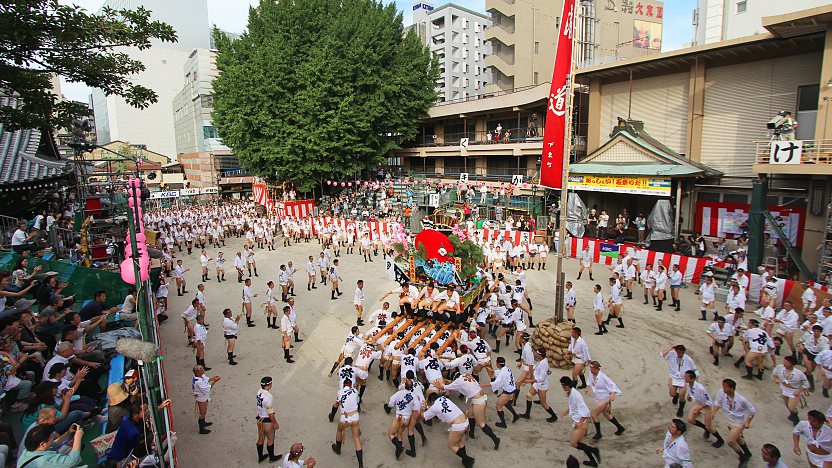
Getting there and around
The festival takes place in the Hakata district of Fukuoka . Kushida Shrine is located a short walk from Kushida Shrine Station (1 minutes, 210 yen from Hakata by Nanakuma Subway Line) and Canal City Hakata or a 15-20 minute walk from Hakata Station.
How to get to and around Fukuoka
Questions? Ask in our forum .
Links and Resources
Hakata gion yamakasa, hotels around fukuoka.


IMAGES
VIDEO
COMMENTS
Hakata Station is the city's main station and connects Fukuoka to the rest of Kyushu and Japan via bullet train, local trains, and buses. You can reach the station by bullet train in as little as five hours from Tokyo or two and a half hours from Osaka. The station has a large bus terminal with buses to a number of cities across Kyushu .
Services such as dry cleaning and currency exchange are provided at the 24-hour front desk. Hotel Nishitetsu Solaria is a 10-minute drive from Ohori Park and JR Hakata Train Station. Canal City Hakata is a 5-minute drive away and Fukuoka Airport is a 15-minute drive away. Travel guide for the city of Fukuoka, Japan.
7. Hakata Gion Yamakasa. 88. Cultural Events. Held annually between July 1st and 15th, this is one of Hakata's signature festivals, along with Hakata Dontaku. There are various opinions concerning its origin, but many believe it started in 1241 when the monk Shoichi Kokushi sprinkled holy water to get rid of diseases.
It's actually too many to do all in one day. My personal favorite was Joten-ji, the birthplace of udon and soba noodles. The famous festival Hakata Gion Yamakasa is also said to have started here. Although it wasn't possible to enter the buildings, the overall design of the place truly impressed me and the stone garden was simply stunning.
The city of Fukuoka is also known as Hakata. It is the biggest city in Kyushu and the 5th biggest city in Japan. It is not only the center of administration and economy in the Kyushu region but also a terminal for air routes and railroads, occupying a central role in travel, information processing, and entertainment.
5. Enjoy a dip in the sea at Momochi Seaside Park. Source: 橋本 真矢. The Momochi Seaside Park is a modern waterfront park, nestled right along the shores of Hakata Bay. Originally developed in the late 1980s for the Asia Pacific Expo, it is now one of the top must-visit places in the Hakata Ward.
Community writer. Fukuoka's Canal City is a large shopping complex conveniently situated between Tenjin (downtown area), Nakasu (entertainment district) and Hakata (originally a port city). There are around 250 shops and restaurants, a cinema, a theatre, amusement facilities, a game centre and 2 high-class hotels. A city within a city.
Rakusuien Garden (楽水園) If you want to escape the bustling Hakata city center quickly, Rakusuien at the back of Sumiyoshi Shrine is the perfect place to spend your 10 or 20 minutes break. The small garden is like an oasis in the city, allowing you to slow down and appreciate the beauty of nature.
The 1-Day Hakata Walking Tour offers a comprehensive exploration of Hakata with a private guide. The tour includes visits to Tochoji Temple, Ohori Park, and a sake brewery. Pickup for the tour is provided at the hotel reception, and there is a full refund for cancellations made at least 24 hours in advance.
3. Hakata City. A massive shopping complex above JR Hakata Station, the busiest train station in Kyushu. 4. Hakata Gion Yamakasa. July 10 to July 15, Kushida Shrine. A water-drenched race of heavy floats through the streets of Hakata that attracts 1 million spectators.
Asia. Sunny, friendly Fukuoka (福岡) is Kyūshū's largest city and Japan's eighth-largest population centre. It's made up of two former towns: the castle town of Fukuoka on the west bank of the Naka-gawa and the merchant town of Hakata on the east bank. Although the two towns merged in 1889 as Fukuoka, the name Hakata is still widely in use ...
Photo: TungCheung / Shutterstock.com. JR Hakata Station is Fukuoka's biggest and the busiest in Kyushu. First opened in 1889, the station provides access to all of Kyushu as well as the rest of Japan with the Shinkansen. It's also the key station for travelling around the city. It was remodeled in 2011, creating more space, more platforms ...
Fukuoka is well connected by both rail and air. The prefecture has multiple stops on both the JR Kyushu Shinkansen and the JR Sanyo Shinkansen, which links to Hiroshima, Osaka, Kyoto and Tokyo. Fukuoka Airport is extremely close to the city center. Fukuoka City's Hakata Port offers ferries to South Korea and to many of Kyushu's smaller islands.
It houses the largest indoor wooden Buddha in Japan, along with rare statuary that is hundreds of years old. See ways to experience (5) 4. JR Hakata City Amu Plaza Hakata. 511. Shopping Malls. By ETflyer. This has been the largest shopping and dining facility since its grand open in 2011. 5.
Hakata Daruma is one of the most famous old ramen shops in Hakata. They started their business in 1963 and have been popular among local people for a long time but are now becoming more and more popular throughout the country. Hakata Daruma only uses select pork, seafood, and other ingredients, which are certified as being of a high quality.
Things to Do in Hakata, Japan: See Tripadvisor's 68,547 traveller reviews and photos of Hakata tourist attractions. ... Restaurants Flights Holiday Rentals Travel Stories Cruises Rental Cars. Tours Add a Place Travel Forum Airlines Travellers' Choice Help Centre. Asia. Japan. Kyushu. ... Fukuoka Open Top Bus and Hakata Doll Painting Experience ...
A typical bowl of Hakata ramen is garnished with minimal toppings: just green onions and char siu (boiled or roasted pork). While the price may vary by restaurant, generally you can have a bowl for between 500 to 700 yen. "Hakata" is the name of a business district in Fukuoka City, Fukuoka Prefecture.
Hakata is an old Japanese city located in Fukuoka Prefecture. It is best known for its ramen (Hakata ramen) and festivals (Hakata Gion Yamakasa, Hakata Dontaku Minato Matsuri, and Hakata O-kunchi). ... Get your FREE 249 Page Japan Travel Guide (Valued At $9.99) Limited Time Offer! Ensure you get the most out of your trip to the land of the ...
Here is our ultimate travel guide and list of things to do in Fukuoka, Japan. ... Address: Japan, 〒812-0027 Fukuoka, Hakata Ward, Shimokawabatamachi, 3−1 7・8F Hakata Riverain Mall
Canal City Hakata (キャナルシティ博多) is a large shopping and entertainment complex, calling itself a "city within the city". Attractions include about 250 shops, cafes and restaurants, a theater, game center, cinemas, two hotels and a canal running through the complex.. Visitors, who are planning on shopping, will likely be able to find something of interest in one of Canal City's ...
Japan has regular and rapid trains that go between the different wards. Travelers can acquire a one-day ticket that grants unlimited rides, which costs around 760 yen ($5).
Decorated with woven bamboo and Hakata-ori silks, the hotel's 147 rooms and 20 suites are a tranquil reprieve from the bustling streets below, and beginning at 538-square-feet in size, they're ...
Seaside Momochi (シーサイドももち, Shīsaido Momochi) is Fukuoka 's waterfront located on reclaimed land along Hakata Bay. The area was originally developed as the site of the 1989 Asia Pacific Expo and was designed with attractive, modern features such as wide, tree-lined streets, futuristic buildings, public parks and no phone or ...
The Hakata Gion Yamakasa (博多祇園山笠) is one of the most interesting festivals in Japan. It is held every year during the first half of July and climaxes with a spectacular time trial race in the early morning hours of July 15. In the race, seven neighborhoods of Fukuoka 's Hakata district compete in pushing beautifully decorated ...